Farmers can now use old Rs 500 notes to buy seeds
NEW DELHI:MMNN:21 Nov. 2016
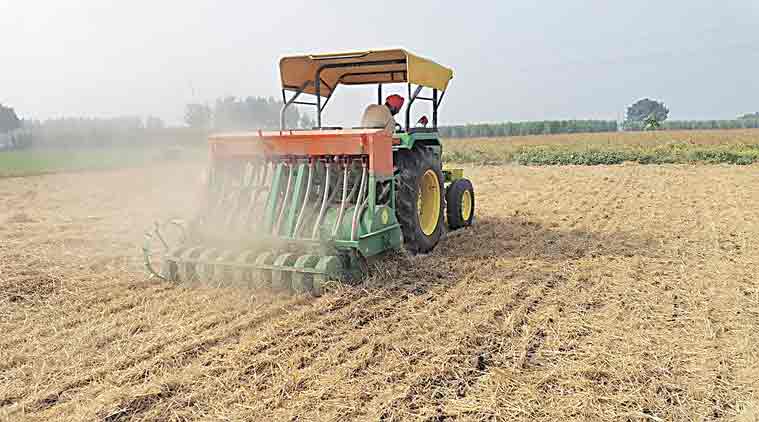
Days after allowing farmers to make cash withdrawals up to Rs 25,000 per week against sanctioned crop loans, the Centre on Monday announced that they will now be allowed to use old high denomination notes for purchasing seeds. Farmers can now use old Rs 500 notes at state-owned outlets towards the purchase of seeds, the Finance Ministry said in a statement.
With the onset of winter, farmers were gearing for the Rabi season. However, Prime Minister Narendra Modi’s November 8 announcement has taken a toll on rural population as the agriculture sector is entirely cash-dependent. Cash crunch meant that farmers had no money to pay farm hands, threatening production of key commodities. With food rations dwindling and no takers for old Rs 500 and Rs 1000 notes, daily-wage earners also struggled to make ends meet.
West Bengal Chief Minsiter Mamata Banerjee, who is trying to stitch up a rainbow coalition against demonetisation, asked the Centre to come up with a proper plan of action instead of “announcing new changes” everyday. “The lower middle class, traders, daily wagers, housewives are the worst sufferers,” she said.
Meanwhile, the Reserve Bank relaxed norms on cash withdrawals. It said that overdraft and cash credit account holders can now withdraw up to Rs 50,000 in a week. Earlier, current account holders were allowed to withdraw up to Rs 50,000 in cash, in a week. “On a review, it has been decided to extend this facility to Overdraft and Cash Credit accounts also,” the central bank said.
Accordingly, holders of current/overdraft/cash credit accounts, which are operational for the last three months or more, may now withdraw upto Rs 50,000 in cash, in a week.
However, this enhanced limit for weekly withdrawal is not applicable for personal overdraft accounts. The Reserve Bank further said the Rs 50,000 withdrawals may be disbursed predominantly in Rs 2,000 denomination bank notes.
Exchange of old notes over bank counters only up to Rs 2,000, just once till December 30
NEW DELHI:MMNN:19 Nov. 2016
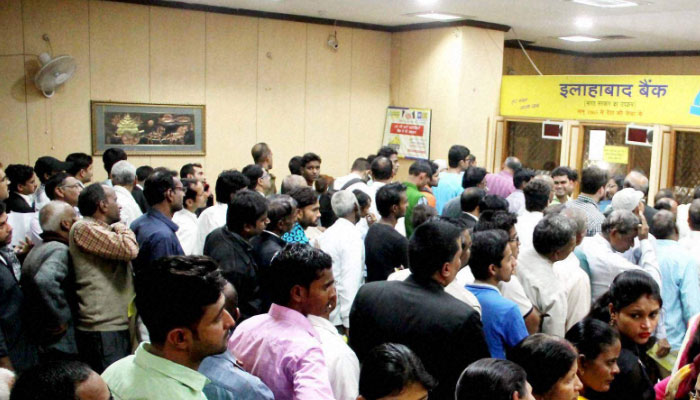
The noose is getting tighter on those who are trying all possible means available to convert black money into white. The Reserve Bank of India on Friday announced that it will limit exchange of old notes into new ones at bank counters only once till December 30. The norm comes into effect starting Friday, November 18.
“On a review it has been decided that the limit of exchange of SBNs(Specified Bank Notes) in cash, across the counter of the banks shall be 2000 with effect from November 18, 2016. This facility will be available only once per person”, said the RBI in a note to the Chairman, Managing Director, Chief Executive Officer of all public, private banks, Regional Rural Banks, Urban and State Cooperative Banks.
However, there is no limit on making bank deposits.
In another development, Indian Bank Association said on Friday that banks will exchange the notes only for their own customers tomorrow( Saturday), i.e. people who have bank accounts with them. So, individuals will have to the banks where they have accounts to change the notes.
However, the banks will exempt senior citizens from this and exchange demonetised notes for them regardless of whether they have accounts with the banks or not.
Meanwhile, banks across the country will remain close on Sunday after they remained opened last weekend despite being holiday then.
The lending institutions will make use of Saturday to clear off the pending work.
Also, government has cautioned Jan Dhan account holders, housewives and artisans that they will be prosecuted under the I-T Act for allowing misuse of their bank accounts through deposit of black money in Rs 500/1,000 notes during the 50-day window till December 30.
The directive comes against the backdrop of reports that some are using other persons' bank accounts to convert their black money into new denomination notes. In some cases, even rewards are being given to account holders for allowing such misuse.
Big relief for farmers, agri-traders, families celebrating weddings
NEW DELHI:MMNN:17 Nov. 2016

With cash crunch following demonetisation + impacting agriculture sector, the government on Thursday announced a slew of measures aimed at smooth sowing season ahead, including permission to farmers to withdraw up to Rs 25,000 per week from their bank accounts.
This apart, for families that have an upcoming wedding, one member of the household can withdraw up to Rs 250,000 one-time, subject to furnishing an undertaking that no other individual will be availing such a concession for the purpose and also upon giving the PAN card details.
However, the amount of money that an individual can exchange from banks by handing over the old Rs 500 and Rs 1,000 notes has been lowered to Rs 2,000 from Rs 4,500+ with effect from Friday. The use of indelible ink for such withdrawals will continue.
Giving these details, economic affairs secretary Shaktikanta Das told reporters here that since the country is at the commencement of Rabi sowing season, the government wants to ensure farmers get smooth supply of inputs such as seeds and fertilisers.
"Crop loans are sanctioned by various bank to farmers. The government has allowed Rs 25,000 per week for farmers to draw in cash, subject to the limit of which crops they are sowing. This cash can also be taken from their Kisan credit card," Das said.
Another concession is for farmers who sell their produce through the various agricultural produce marketing committees.
"Farmers who sell their produce in mandis, against the payments they receive by way of cheque or RTGS method (electronic transfers into their bank accounts), they can draw up to Rs 25,000 per week from their own account," Das said.
Similarly, agri-traders registered with such marketing committees, can withdraw up to Rs 50,000 per week from their designated bank accounts.
Das said both Prime Minister Narendra Modi and Finance Minister Arun Jaitley decided to favourably consider the representations made by families that have upcoming weddings — hence the Rs 250,000 withdrawal allowance+ .
Two other decisions taken on Thursday are: A 15-day extension in the payment of crop insurance by farmers and an allowance for withdrawing Rs 10,000 as advance for central government employees up to Group 'C' to be adjusted against their November salary.
This will also apply to employees of Indian Railways, defence and state-run units.
SBI reportedly writes off bad loans of Rs 7,016 cr; Cong rakes up issue in Parliament
MMNN:16 Nov. 2016
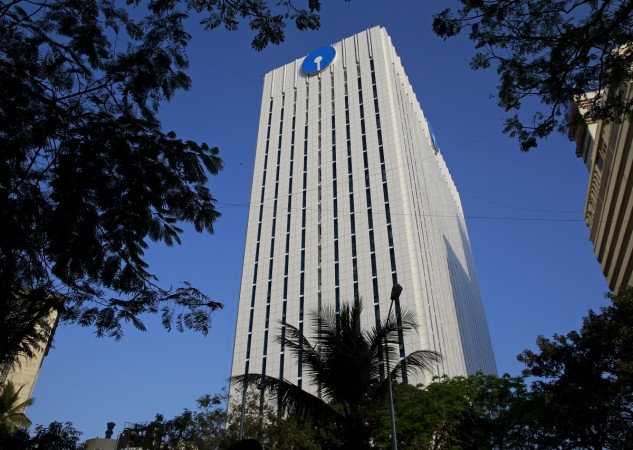
The State Bank of India has cleaned up non-performing assets worth Rs 7,016 crore from its books by writing off loans given to 63 wilful defaulters, Daily News & Analysis reported on Wednesday. Of the 63 accounts, 31 have been partially written off and six shown as NPAs.
The clean-up drive saw the bank forgoing almost Rs 1,201 crore in dues to Vijay Mallya’s defunct Kingfisher Airlines, which is at the top of the list of wilful defaulters. In other words, loans given to Kinfsiher Airlines will no longer be shown in the bank’s balance sheet, though the airline has outstanding dues of almost Rs 1,201 crore. Some of the other prominent defaulters who feature in the write-off list are KS Oil (Rs 596 crore), Surya Pharmaceuticals (Rs 526 crore), GET Power (Rs 400 crore) and SAI Info System (Rs 376 crore).
The Congress party immediately reacted to the article and linked it to the government's demonetisation drive. "As Modiji's blue-eyed boy Mallya gets a Rs 1,200-cr write-off, fighting black money is political hypocrisy at its worst," said Congress leader Randeep Singh Surjewala.
Even Congress leader Anand Sharma expressed apprehensions that the money received from people migth be used to recapitalise the banks and wipe out Rs 6 lakh crore of non-performing assets of big industrialists.
"The Non-Performing Assets (NPAs) are to the tune of Rs 6 lakh crore. Do they want to utilise the money deposited by people in banks to wipe out the NPAs (on account) of industrialists who have played fraud on the country?" party spokesman Kapil Sibal said at a briefing by the All-India Congress Committee.
He claimed that the Reserve Bank of India RBI would transfer the money to the government, which would recapitalise banks and clear their balance sheets, and the "whole thing has nothing to do with black money; it is a compromise on black money and with NPAs".
Even Delhi Chief Minister Arvind Kejriwal has called demonetisation the biggest scam.
"This is what we feared. The hard-earned money of people will be put into banks to write off the loans of crorepatis. They have already started doing it," he said on Twitter."
Indelible ink to be used to identify people who exchange notes
MMNN:15 Nov. 2016
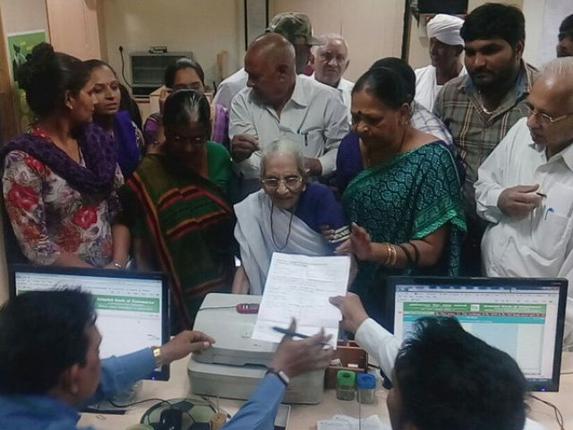
Even as the Opposition parties, including the Congress, Left, TMC, NCP and the JD(U), are to meet soon to formulate strategies in the coming winter session of Parliament to take on the government on the issue of demonetisation, Economic Affairs Secretary Shaktikanta Das, in a press meet on Tuesday, made a couple of announements to combat the crisis of cash crunch.
Mr. Das said indelible ink would be used at banks to identify people who exchange notes. He also announced the formation of a special task force to monitor the infusion of fake currency in to the market, especially in the vulnerable areas of the country. He pointed out that Prime Minister Narendra Modi reviewed the supply of currency for the second time in two days on Monday night.
Mr. Das urged places of worship, who receive smaller denomination notes, to deposit them in banks so supply of these notes increases.
He warned people not to fall prey to rumours being spread through social media.'We have enough stock of salts and there is no reason for a temporary surge in price or shortage. Supply of essential commodities is being closely monitored. There are a lot of stories spreading through social media, like reports of certain institutions going on strike. There is no such thing, please don't believe such reports.''
Mysore Paints asked to stock up on indelible ink
After providing indelible ink to the Election Commission since 1962 to mark voters, the Mysore Paints and Varnish Limited has a new task at hand. It has been asked by the government to keep its stocks ready so that the indelible ink can be used by banks to mark customers exchanging defunct currency notes to check suspicious deposits.
Prachanda asks Modi for help
Nepal Premier Prachanda called up Prime Minister Narendra Modi and sought an arrangement so that Nepalese holding a huge stock of banned high denomination Indian bank notes could swap them with legal currency in the country. Hundreds of thousands of Nepalese, who earn a living by working as daily-wage labourers in India, visit the neighbouring country seeking medical treatment or rely on Indian markets to purchase daily essentials, are said to be holding big chunk of scrapped Indian bank notes, Kathmandu Post reported.
Supreme Court refuses to stay govt. notification
The Supreme Court on Tuesday refused to stay the government’s notification demonetising Rs 500 and Rs 1,000 currency, but asked it to spell out the steps taken to minimise public inconvenience. “We will not be granting any stay,” a Bench comprising Chief Justice T. S. Thakur and Justice D. Y. Chandrachud said.
People throng ATMs, banks
As the day began, people began thronging ATMs and banks across the country to withdraw money and exchange Rs. 500 and Rs. 1,000 notes. Many banks had remained closed on Monday on account of Guru Nanak Jayanti.
The Congress and seven other Opposition parties met on Monday to formulate a joint strategy to put the government on the mat on the issue. After the meeting, Congress deputy leader in the Rajya Sabha Anand Sharma said, “There is broad consensus that the demonetisation issue should be raised in Parliament.”
Addressing a rally in eastern Uttar Pradesh’s Ghazipur on Monday, Prime Minister Narendra Modi targeted his opponents for criticising his move. He asked people if he should be frightened by powerful forces hurt by his decision, even as he reiterated he would face the consequences.
Micro ATMs to address cash crunch; Rs. 2,000 notes in ATMs in 2 days
NEW DELHI: MMNN:14 Nov. 2016
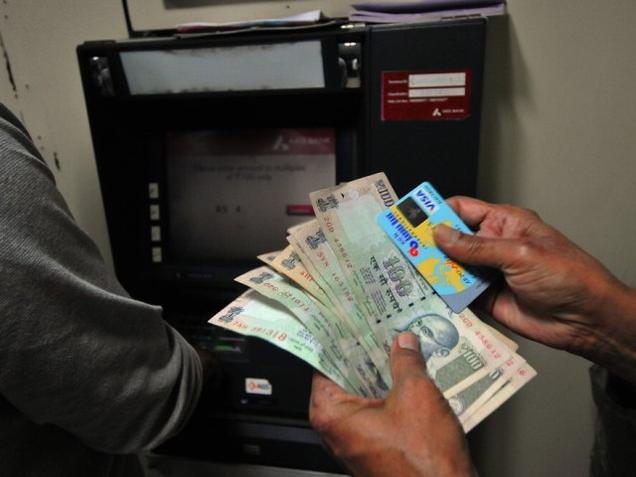
A day after Prime Minister Narendra chaired a meeting to review the demonetisation of Rs. 500 and Rs. 1,000 notes and its impact, Economic Affairs Secretary Shaktikanta Das on Monday announced that the now defunct currency would be accepted at government hospitals, petrol stations and toll booths till November 24.
The Prime Minister’s meeting came amid continuing chaos and growing public anger across the country over limited cash availability following the surprise demonetisation of the two higher value notes.
On Sunday, the cash withdrawal limit at ATMs was hiked to Rs. 2,500 from Rs. 2,000 a day.
The weekly limit of Rs 20,000 for withdrawal from bank counters was also increased to Rs. 24,000. The maximum limit of Rs. 10,000 a day on such withdrawals has been removed.
There's no dearth of money, but where is it and who has it? asks Modi
Our Correspondent Omar Rashid reports from Ghazipur where Mr. Modi held a rally. Describing his step as a strong decision, Mr. Modi compared it to a cup of strong tea people would ask him to make when he used to sell tea in childhood.
"I am used to making kadak chai [strong tea] since childhood. Poor people like kadak chai," he said. Here's the minute-by-minute coverage of the Prime Minister's address.
Shiv Sena says it is 'demonic and unsystematic'
Notwithstanding the Prime Minister’s emotional appeal to people to cooperate with him to weed out illegal money, the Shiv Sena on Monday described the demonetisation as “demonic and unsystematic” that has led to “financial anarchy” in the country. Instead of striking Pakistan, Mr. Modi has wounded Indian citizens who do not have any black money and the few who actually possess illegal funds have safely parked it in foreign banks.
Micro ATMs to be set up: Das
Mr. Das says the focus of the government is on activating all channels whereby cash is dispensed to the public. Banking correspondent will now be allowed to withdraw cash multiple times as opposed to only once a day earlier. "Banks to increase cash holding limit of banking correspondents to Rs 50,000. Micro ATMs will be set up across the country to tide over the cash crunch.
Clarifying on the recalibration of ATMs, he says a task force has been set up to address the issue at the earliest.The recalibrated ATMs will start dispensing Rs. 2,000 notes within two days.
Regarding the situation in post offices, he says the supply of cash to the 1.3 lakh branches will be enhanced. Also, those businesses with current accounts with banks can withdraw up to Rs 50,000 to pay wages to their employees.
To a question on the reasons for the delay, he explains that each ATM carries four trays and three of them carry Rs. 500, Rs. 1,000 notes. Those trays have to be replaced and recalibrated. And, only only one tray is being used right now.
"Please remember, it's a huge task. Even the Prime Minister said that there would be inconvenience. But the govt. is doing all it can and the situation is improving every day and every hour," he says.
Banks closed today; queues get longer at ATMs
Cash-strapped people were seen standing outside ATMs from early morning but had very little success as most of the machines were running dry. Scuffle and heated exchanges at ATMs were reported from many parts of the country.
Congress, TMC meet to plan united fight in Parliament
Congress and TMC leaders will discuss and chalk out a strategy to counter the Centre on the demonetisation issue during the Winter Session of Parliament.
Leader of the Opposition in the Rajya Sabha Ghulam Nabi Azad and his counterpart in the Lok Sabha Mallikarjun Kharge will meet TMC leader Sudip Bandyopadhyay, sources said.
U.P. Congress leader backs move
Our correspondent Smita Gupta reports that Congress leader Harikesh Bahadur has come out in support of the government's move to scrap the notes. Mr. Bahadur, on Monday, issued a statement saying,"The decision to ban Rs. 1000 / Rs. 500 currency notes is a correct and a necessary measure to restore financial discipline and regulate the economy. It will unearth black money and act as a deterrence on generation of black money. All citizens should prepare themselves to tolerate minor hardship for some time for development of the nation and prosperity of the people.(sic)" More...
Mamata calls up Yechury, but to no avail
A day after she urged all the Opposition parties, including the CPI(M), to unite against the demonetisation move, Bengal Chief Minister Mamata Banerjee said she called up President Pranab Mukherjee and CPI(M) general secretary Sitaram Yechury on Sunday.
“Ms. Banerjee made a frantic call to Mr. Yechury today [Sunday] afternoon when he was travelling. The Chief Minister urged him to unite against the centre. But Mr. Yechury said that he would only be able to take a call on the matter after discussing it within the party,” CPI(M) Polit Bureau member and MP Md. Salim told.
Banks say note exchange facility being misused
NEW DELHI: MMNN:12 Nov. 2016
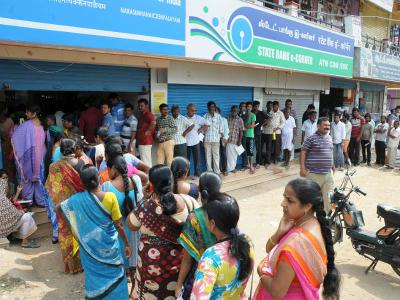
Confusion over the facility for exchanging old high-denomination notes, subject to a limit of Rs 4,000, at banks and post offices by providing valid identity cards has led to some people misusing the system to legalise their unaccounted wealth.
At present, the exchange facility is a one-time window and the limit will be reviewed after November 24. Several bank officials told ET that the exchange of demonetised Rs 500 and Rs 1,000 notes over the counter for Rs 4,000 is being misused and banks are taking steps to address the issue.
A senior official with the State Bank of India said the Reserve Bank of India has sent an email to banks stating that the exchange facility for Rs 4,000 is a one-time window. “But we have no way to track whether an individual has already availed of this benefit at another bank,” he said.
“The intention is to support people to meet exigencies. The ATMs are now functional and people can withdraw money as per the existing limits,” said a senior official with Punjab National Bank, adding that some individuals are misusing this window by going to different branches of a bank or other banks.
People can also use multiple IDs at the same branch or post office as systems are not in place to verify transactions.
State-run Central Bank of India has developed software to keep track of the Aadhaar number and PAN card of beneficiaries, which is shared across all its branches, an official said.
“It is taking time to update, given the huge flow of people, but we are ensuring that the facility is made available only once and is not misused,” he said.
A senior official with Corporation Bank said that individual branches are maintaining a similar database and no person can exchange currency for more than Rs 4,000 at the same branch.
“We are educating people on the guidelines – some of them don’t know about it and are not coming with any mala fide intention,” he added.
A finance ministry official said all such data will be collated and tracked. “If there is any unusual pattern of withdrawals from any Aadhaar number and PAN account, we will be investigating such cases,” he said.
Specified bank notes of aggregate value of Rs 4,000 or below may be exchanged for any denomination of bank notes with a requisition slip in the format specified by the Reserve Bank and proof of identity, the RBI said in a circular dated November 8.
“The limit of Rs 4,000 for exchanging specified bank notes shall be reviewed after fifteen days from the date of commencement of this notification and appropriate orders may be issued, where necessary,” the RBI said.
Cash withdrawal from a bank account over the counter is restricted to Rs 10,000 a day, subject to a limit of Rs 20,000 a week, until November 24.
Withdrawal from ATMs is restricted to Rs 2,000 per day per card up to November 18.
New notes for old: Citizens rush to banks, post offices
BENGALURU: MMNN:11 Nov. 2016
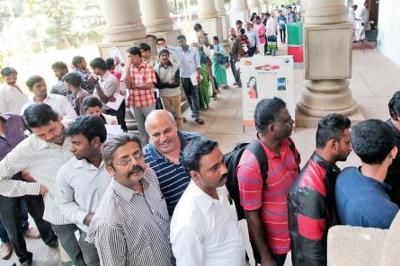
Early Thursday morning, Bengalureans made a beeline for banks and post offices across the city to exchange the demonetized Rs 500 and Rs 1,000 notes for those of smaller value.
Scores of people had queued up in front Canara Bank, Yelahanka New Town branch in north Bengaluru by 7.30am, two hours before it opened. With banks and ATMs closed on Wednesday and Thursday, the liquidity crunch had hit the aam family hard.
Banks threw open their doors at the scheduled timing to unceasing questions and confusion. Quarrels and tears were a common sight as panicky citizens just wanted to get rid of their old notes. Amid tight security to ensure smooth handling of the public, queues snaked out of the branches on to roads, disrupting traffic flow. Those waiting at post offices had to return empty-handed as money had not yet reached.
"When else can I exchange them? Who will do it for me later on?" questioned Muthamma, 70, unwilling to believe officials at a public sector bank who tried explaining that she could exchange the money later.
Bank branches around Mysuru Road in southwest Bengaluru saw small shop owners and traders trooping in with every passing hour.Hard-pressed for space, security personnel had to hold the gates tight to keep out to the burgeoning crowds. "Senior citizens are not able to understand the procedure properly. They are afraid of keeping Rs 500 notes with them. No matter how many times we explain, they just don't understand," said an official at a public sector bank in the area.
Asked why those with accounts in the bank should also produce identity documents to deposit money, an HDFC Bank staffer at the RT Nagar branch tersely said: "Madam, today we are not HDFC Bank. We are RBI."
Request forms to initiate cash exchange began running out at most places, sending officials and citizens into distress. The forms that took less than a minute to fill became the most important document, without which citizens' identity proof would also be no good. At Canara Bank, Koramangala, citizens who realized they could exchange a maximum of Rs 4,000 at a time, launched into a series of discussions and deliberations.
At the General Post Office, however, there was excitement in the air when news broke that the Reserve Bank of India would be sending only new Rs 2,000 notes. "We may be the first to see them, perhaps," said Malathi Rao, waiting eagerly.
Many were waiting since morning for the consignment of notes, which arrived at 12.30pm under tight security. Mohammed Rafeeq, a resident of Shivajinagar who runs a fruit business, told, "I've been waiting since yesterday to get the notes exchanged.There's no food in my house since last night."
Thimmoji Rao, assistant chief post master, explained the delay to impatient citizens, "We couldn't have brought the currency from the RBI last night due to lack of security . It had to be done this morning."
Holding up her two crisp Rs 2,000 notes, Padmavathi M, a retired BSNL official, was the first at the GPO to successfully exchange her notes. "I was in the area to collect my pension and when I saw the line forming up at the GPO, I thought I should join as well. Anyway, it was worth it."
Post offices in Indiranagar and Koramangala saw an unbelievable turnout of citizens waiting to exchange their old notes. Said one official, "Look at this crowd, it seems like the world is going to end tomorrow and they have to get rid of the money as soon as possible."
A senior citizen, Thimmaraju Manjunath, waiting at the post office on Rajbhavan Road, told TOI: "You are from the press? Then make sure Mr Modi knows what we're going through."
Just across the road at the State Bank of Mysore branch, citizens got into a fiery argument over jumping queues.Some others demanded that women be given priority at the counters.
"We've all been waiting here since morning and even at noon, we haven't got to work," said Mona Kar, a private firm employee.
The main branch of Canara Bank (Town Hall) saw at least 200-300 people lined up to exchange their notes. "Not all gathered here need the money because of an emergency. They are paranoid about losing their cash, we are trying to explain to them to queue up only if it's an emergency. They have time till December 31 to exchange old notes."
Frazzled citizens outside Corporation Bank in Koramangala quarreled over queue breaking. "People are panicky and agitated. No one likes to stand in long queues but it isn't easy to handle so many notes and transport them safely. We must look at the larger picture and cooperate as it's just a matter of a few days till things normalize," said an official at the branch.
GATEWAYS TO BWSSB PAYMENT
BWSSB has made it easy for customers to pay their bills through online payment gateways like Paytm, Pay u, Citrus and BillDesk. This will be functional from November 18 to December 31 till the process of exchanging old notes is complete. BWSSB will also receive at its kiosks high denomination notes towards payment till Friday midnight. Consumers can visit BWSSB website http:www.bwssb.gov.in to pay online.
FUEL STATIONS SAY NO TO NEW NOTES
At a few petrol stations, attenders refused to take new notes from customers.A distraught Sanjay who stopped at a petrol bunk in Kamakshipalya was shocked that the attender didn't take the brand new Rs 2,000 note from him, though he had enough change to give Sanjay. "This is unfair. We first stand in line the whole day to get new notes and now they refuse to take it saying they can't accept them today.He isn't even clear what the problem is with Rs 2,000 notes," said Sanjay.
New Rs 500, Rs 2000 notes hit market
New Delhi: MMNN:10 Nov. 2016
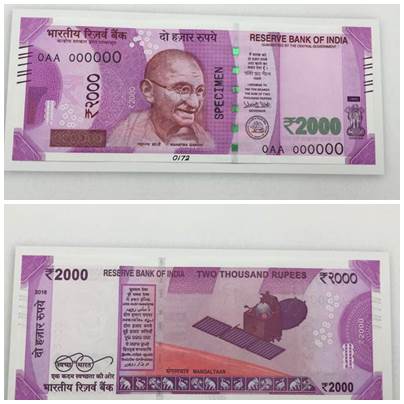
As the banks reopened for the first time on Thursday since the demonetisation of Rs 500 and Rs 1000 notes on Tuesday night, many rushed to deposit/exchange old notes across the country. Here are 10 latest devlopments.
1. Long queues at banks to exchange old notes
Long queues were seen outside banks across the country and also at RBI counters for replacement of old Rs 500 and 1,000 notes on Thursday. Banks have made additional arrangements for exchanging cash and deposit of old high denomination notes in order to handle heavy rush. Banks have been asked to be open on weekends including Sunday to deal with the situation.
2. No harassment over small deposits under demonetisation: Jaitley
Finance minister Arun Jaitley on Thursday said nobody would be harrassed over smaller deposits — less than Rs 2.5 lakh — as people began thronging banks nationwide to exchange or deposit Rs 500 and 1,000 currency notes that have been demonetised. "Nobody will face questions or harassment for small deposits," Jaitley said.
3. Jaitley said people might face problems initially but in the medium to long run they will definitely benefit from the government's policy of demonitising large currency notes in a bid to curb corruption, unaccounted wealth and terror financing.
4. It is only those with large amounts of undisclosed money who will have to face the consequences under existing laws, Arun Jaitley said.
5. New Rs 1,000 notes with extra security features in a few months
Government will re-introduce Rs 1,000 bank notes in a few months and also issue new series of lower denomination bills with enhanced security features. "In a few months, Rs 1,000 notes with new features will be brought into the market," said economic affairs secretary Shaktikanta Das said.
6. New notes of all denominations with added security features
The currency notes of lower denomination of Rs 100 and Rs 50 will continue to be the legal tender, economic affairs secretary Shaktikanta Das said said, adding the Reserve Bank will come out with new series of such notes with new design and added security features. He said the RBI, time and again, has been introducing new series of currency notes with new design and enhanced security features.
7. Craze for selfie with Rs 2,000 note catches on
Posing with the new Rs 2,000 currency note is the latest trend to hit India, with people taking to social media with the freshly-minted notes. #Rs2000 is currently viral on Twitter, Instagram and Facebook along with photos and morphed selfies with RBI governor Urjit Patel.
8. Random checks by RBI officials
"Special squads of RBI officials are conducting random checks in the bank branches and keeping a tab on the developments," a senior official of Union Bank of India said.
9. Extra police deployment
Addition personnel of paramilitary and police along with quick reaction teams have been deployed across cities for maintaining security in banks in view of rush of people to exchange the now-invalid currency notes of Rs 500 and Rs 1,000
10. SC to hear plea against demonetization of notes on Tuesday
The Supreme Court on Thursday refused to grant an urgent hearing on a PIL challenging the Narendra Modi government's decision to demonetize high denomination notes of Rs 500 and Rs 1,000. Apprehending that the court may pass interim order on the issue, the Centre has filed caveat in the apex court which means that no order could be passed by court without hearing government contentions. The petition, filed by a lawyer, alleged that sufficient time frame had not been given for the transition and it would create unprecedented chaos and panic among people.
Rs. 500, Rs. 1000 notes no longer legal tender
New Delhi: MMNN:9 Nov. 2016

Currency of Rs. 500 and Rs.1,000 ceased to be legal tender from midnight on Tuesday. Prime Minister Narendra Modi announced this in a surprise address to the nation on Tuesday night. He said the decision was taken to root out the menace of black money and corruption.
Notes of Rs. 100, Rs. 50, Rs. 20, 10, Rs. 5, Rs. 2 and Re. 1 remain legal tender and will be unaffected by the decision, the Prime Minister said, adding that all banks and ATMs will be closed on Wednesday and ATMs in some places on Thursday as well.
Mr. Modi announced that the existing Rs. 500 or Rs. 1,000 notes can be deposited in an individual’s bank or post office accounts between November 10 and December 30. Currency value of up to Rs. 4,000 can be exchanged from any bank or post office a day till November 24 by showing a government identity card.
However, for 72 hours, government hospitals, railway, air and government bus ticket booking counters will continue to accept the old notes. Old notes will also be accepted till November 11 at petrol, diesel and gas stations authorised by public sector oil companies, consumer co-operative stores authorised by State or Central government, milk booths authorised by States as well as crematoriums.
The Reserve Bank of India will issue new Rs. 500 and Rs. 2,000 notes starting from November 10. The new Rs. 500 note will feature the Red Fort and the new Rs. 2,000 note will feature Mangalyaan, Economic Affairs Secretary Shaktikanta Das said at a media briefing late on Tuesday night. These notes will become available from November 10.
Once the ATMs start functioning, there will be a withdrawal limit of Rs. 2,000 per debit card, which will be increased to Rs. 4,000 later, Mr. Modi said in the 40-minute televised address to the nation. There will, however, be an overall limit on withdrawal from banks of Rs. 10,000 a day and Rs. 20,000 a week, which will be increased in the coming days.
Mr. Modi said there will be no restriction of any kind on non-cash payments by cheques, demand drafts, debit or credit cards and electronic fund transfer.
Without naming Pakistan, the Prime Minister made a pointed reference to cross-border terror that was being funded by forged currency notes. “In the country’s history of development, there comes a moment where powerful and decisive decisions are needed,” he said.
“Your money will be your money. You don’t have to worry about this. We have made arrangements to ensure that citizens suffer the least possible difficulty,” he said.
‘Surprise essential’
A government official said that the move was necessary to stop terrorists and drug cartels “in their tracks.” “An element of surprise is essential, or else they would have made necessary arrangements.” The official described the action as a “surgery since the tumour had to be removed to prevent recurrence.”
He claimed that this will result in a reduction of inflation as conspicuous consumption will come down. According to him, the “tumour of corruption could not be fought through tried, tested and failed methods” and it was time to employ new methods to defeat the enemies of India. Till March 2016, Rs. 14 lakh crore out of Rs. 16 lakh crore worth currency issued by the RBI were in the denominations of Rs. 500 and Rs. 1,000, as per the central bank’s official data.
Currency values circulated by Reserve Bank of India till March 2016
| Currency values |
in Rs. Billion |
| Rs. 2 and 5 |
45 |
| Rs. 10 |
320 |
| Rs. 20 |
98 |
| Rs. 50 |
194 |
| Rs. 100 |
1578 |
| Rs. 500 |
7854 |
| Rs. 1000 |
6326 |
| Total |
16, 415 |
India Firms to List 600 Million Pounds of Masala Bonds in London
New Delhi: MMNN:7 Nov. 2016
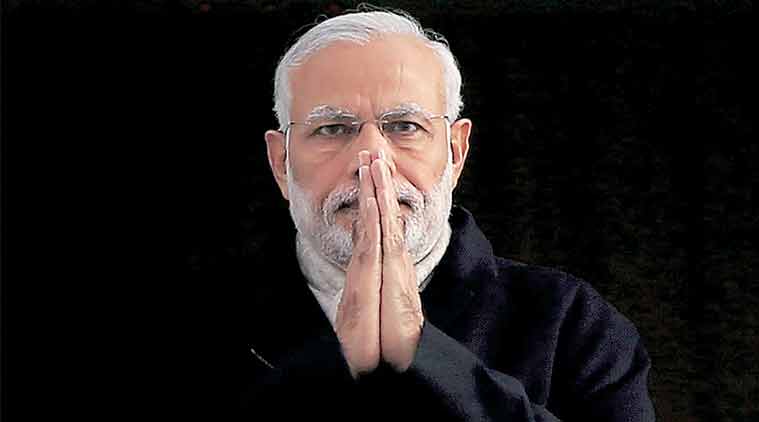
India is preparing to list about 600 million pounds ($746 million) of so-called masala bonds in London as it seeks to fund expansion of its energy and transport infrastructure.
Four bonds -- denominated in rupees, but sold overseas -- will be issued by the state-backed Indian Railway Finance Corp., Indian Renewable Energy Development Agency, Energy Efficiency Services Ltd. and National Highways Authority of India by the end of January, U.K. Prime Minister Theresa May’s office said on Monday in an e-mailed statement.
The announcement is a bright spot in May’s three-day visit to India, during which she’s already clashed with her counterpart, Narendra Modi, over British visas for Indian students. May is trying to show the U.K. is “open for business,” even as she prepares to extricate the country from its four-decade membership of the European Union.
Her office said the renewable energy and energy-efficiency bond issues also highlight London’s growth as a center for green financing.
“This is another vote of confidence in our world-leading financial services and further proof that Britain is open for business,” May said in the statement.
“This government will continue to work closely with both India and our financial services sector to ensure our growing rupee bond market continues to help finance India’s ambitious infrastructure investment plans.”
Punjab National Bank Q2 Net Profit Dips 11.5% To Rs. 549 Crore
New Delhi: MMNN:5 Nov. 2016
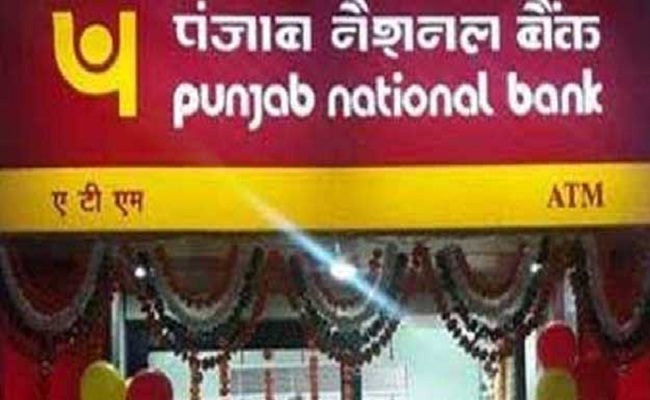
State-owned Punjab National Bank today reported a 11.5 per cent fall in net profit at Rs. 549.36 crore for the second quarter ended September 30 on rise in provisions for bad loans.
The bank had reported a net profit at Rs. 621.03 crore during the July-September quarter last fiscal.
"Total income increased to Rs. 14,218.27 crore for the quarter ended September 30, 2016 from Rs. 13,701.93 crore for the same quarter a year earlier," the bank said in a regulatory filing.
Total interest, however, earned by the bank in the three-month period fell by 4.16 per cent to Rs. 11,830.36 crore from Rs. 12,345.03 crore a year earlier.
During the quarter, provisions for bad loans increased 34.6 per cent to Rs. 2,533.76 crore from Rs. 1,882.08 crore in the year-ago period.
Gross NPAs as a proportion of total advances moved up 13.63 per cent during the second quarter as against 6.36 per cent in the corresponding period last fiscal. Net NPAs also rose 9.10 per cent as against 3.99 per cent in the quarter under review.
Shares of the bank closed at Rs. 131.60 apiece on the BSE on Friday.
UK's New Visa Crackdown To Impact Indian IT Professionals
London: MMNN:4 Nov. 2016
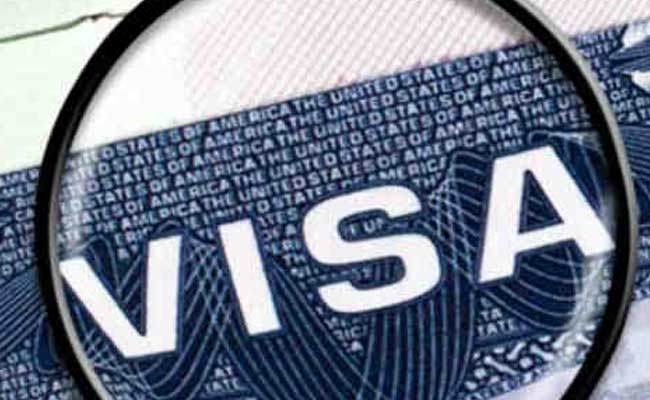
In a crackdown to curb its soaring immigration figures, the UK government has announced changes to its visa policy for non-EU nationals, which will affect a large number of Indians especially IT professionals.
Under the new visa rules announced last evening by the UK Home Office, anyone applying after November 24 under the Tier 2 intra-company transfer (ICT) category would be required to meet a higher salary threshold requirement of 30,000 pounds from the earlier 20,800 pounds.
The ICT route is largely used by Indian IT companies in Britain and the UK's Migration Advisory Committee (MAC) had found earlier this year that Indian IT workers accounted for nearly 90 per cent of visas issued under this route.
The changes come just days before British Prime Minister Theresa May lands in India on Sunday for her three-day visit.
"The first of two phases of changes to Tier 2, announced by the government in March following a review by the Independent Migration Advisory Committee, will affect applications made on or after November 24 unless stated otherwise," a UK Home Office statement said.
Besides the Tier 2 ICT salary threshold hike, the other changes announced include increasing the Tier 2 (General) salary threshold for experienced workers to 25,000 pounds, with some exemptions; reducing the Tier 2 (ICT) graduate trainee salary threshold to 23,000 pounds and increasing the number of places to 20 per company per year; and closing the Tier 2 (ICT) skills transfer sub-category.
A number of changes have also been announced for the Tier 4 category, which covers maintenance requirements for the Doctorate Extension Scheme.
Nationals outside the European Union, including Indians, will also be affected by new English language requirements when applying for settlement as a family member after two and a half years in the UK on a five-year route to residency settlement in the UK.
The new requirement will apply to partners and parents whose current leave to remain in the UK under the family immigration rules is due to expire on or after May 1, 2017.
The changes follow advice by the MAC earlier this year to curb the Tier 2 ICT route and reduce reliance on foreign workers.
"(Immigration) is not serving to increase the incentive to employers to train and upskill the UK workforce. Ready access to a pool of skilled IT professionals in India is an example of this," the MAC report had said in its findings.
"We did not see any substantive evidence of long-standing reciprocal arrangements whereby UK staff are given the opportunity to gain skills, training and experience from working in India," it noted.
The MAC had added that the evidence indicates that multinational companies with a presence in India had developed a competitive advantage in delivering IT projects in the UK.
"They have developed a delivery model, whereby significant elements of projects are delivered offshore in India, taking advantage of the fact that Indian salaries are lower than in the UK for equivalent workers.
"Indeed, partners told us that India currently has a competitive advantage in training IT workers and in the time it would take to fully upskill the native population, technology would have moved on," the report concluded.
The new rules follow further tightening of the Tier 2 category, which came into force in April this year.
"The UK government's reforms to Tier 2 work visas are intended to ensure that businesses are able to attract the skilled people they need, but also see that they get far better at recruiting and training UK workers first," then UK Immigration minister James Brokenshire had said.
Jindal Steel Again Defaults On Interest Payment
New Delhi:MMNN:3 Nov. 2016

Jindal Steel and Power Ltd on Thursday said it has failed to pay Rs. 15.43 crore interest on non convertible debentures (NCDs), which was due on October 31.
"The company has not made payment of Rs. 15.43 crore towards the interests due on NCDs, the due date for payment of which was October 31, 2016," JSPL said in a regulatory filing.
Last month, the firm had said it has defaulted on payment of interest on NCDs, due on September 30, 2016 on account of cash flow mismatches.
In the last few months, the Naveen Jindal led company has divested some of its assets to pare debt. JSPL has a net debt of around Rs. 46,000 crore.
In October, the company said it will sell its 24 MW wind power plant in Satara, Maharashtra to a subsidiary of India infrastructure Fund II for an undisclosed amount.
Similarly, in May this year, the firm inked an agreement with JSW Energy, a firm led by Naveen's brother Sajjan Jindal, to sell its 1,000 MW power plant, at Raigarh, Chhattisgarh.
According to the deal, JSW will pay at least Rs. 4,000 crore, excluding net current assets, and an additional Rs. 2,500 crore if JSPL's power plant secures a long term power purchase agreement.
Likewise, in March, JSPL announced that its subsidiary Jindal Power has entered into a definitive agreement to divest 4.12 per cent stake in Indian Energy Exchange for an undisclosed amount by month-end.
SBI Cuts Home Loan Rate To Lowest In 6 Years In Bonanza For Buyers
New Delhi:MMNN:2 Nov. 2016
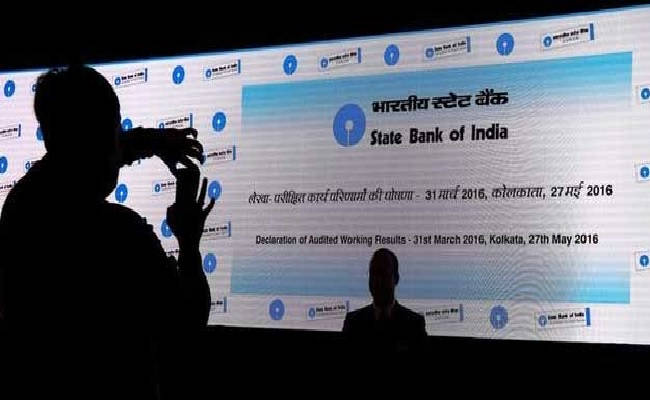
In cheer for home buyers, State Bank of India (SBI) has cut interest rate by 0.15 per cent to a six-year low. The revised rates for new borrowers are effective from November 1, 2016, for loans up to Rs. 75 lakh.
For woman borrowers, SBI has brought down the interest rate to 9.10 per cent per annum from 9.25 per cent while for others to 9.15 per cent from 9.30 per cent.
This means that on a home loan of Rs. 50 lakh of 30 years, a home buyer can save Rs. 542 per month on EMIs.
This limited period festival offer is valid from November 1, 2016 to December 31, 2016, SBI said.
The rate cut comes in the wake of the SBI lowering its deposit rates last month.
SBI in a statement said its home loans are the "cheapest in the market" and provides an opportunity for both, new home buyers as well as those who wish to switch over their home loan to SBI to save on EMIs.
Analysts say that the SBI's rate cut could increase the competitive pressure on other lenders to bring down their interest rates.
Under a new lending rate regime effective from April 1 this year, banks price their lending rates based on marginal cost of lending rate (MCLR), which is closely linked to the actual deposit rates. For new borrowers, the MCLR is revised every month. In SBI's case, a customer is locked into the MCLR for a year if he/she avails the loan.
SBI's managing director Rajnish Kumar told NDTV Profit that the move will benefit a lot of people who are looking for affordable homes. The bank is seeing a lot of demand for housing loan below Rs. 1 crore, he added.
As part of the festive season offer, SBI has also waived processing fee on its approved projects and balance transfer of home loans.
Dhanteras 2016: Significance of investing in gold today, and 3 things to keep in mind while buying
New Delhi:MMNN:28 Oct. 2016
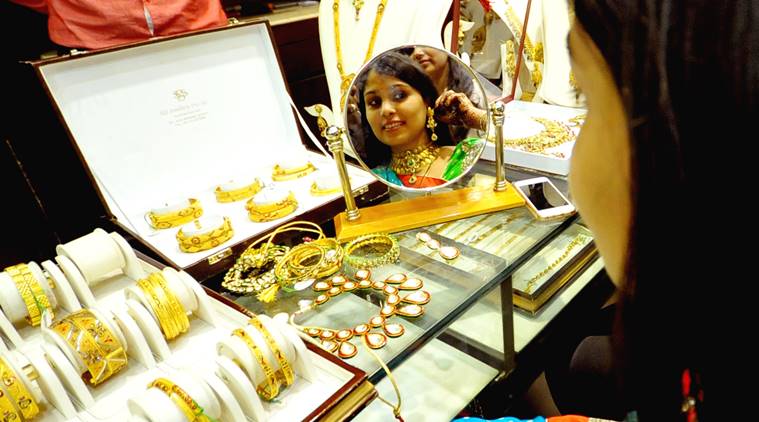
Dhanteras or Dhanatrayodashi is an important Hindu religious festival which is celebrated on the first day of the five-day Diwali festival. ‘Dhan’ means wealth and ‘teras’ means the thirteenth day of the moon cycle. This year, it falls on October 28.
Also known as the festival of wealth, Dhanteras is celebrated in the month of Karthik, on the thirteenth day of Karthik Krishna Paksh. Goddess Lakshmi is worshipped on this day, along with Dhanvantri — an avatar of Lord Vishnu. Some even worship Kuber, the Hindu god known as the treasurer of the world. In India, where gold is not just a metal but an emotion as well, it is only natural that we have specific days when it is considered auspicious to buy gold. People purchase gold, silver and other household utensils on this day because they believe doing so will bring prosperity and good luck for the family and business endeavours.
Why buy gold on Dhanteras?
According to Indian mythology, King Hima’s 16-year-old son was doomed to die by a snake-bite on the fourth day of his marriage. When his wife found out, she did not let anyone in the house sleep on the fourth night. She put all her ornaments and gold coins in a heap and sang melodious songs. When Yamaraj, the god of death, came in the form of a serpent, he was blinded by the shine of all the gold and sat dazed listening to the songs, thus, not killing the prince. This is said to be the reason why people continue to invest in gold and silver even today, to ward off evil and make way for blessings. People also light lamps to worship Yamaraj on Dhanteras.
Things to keep in mind while buying gold jewellery
It’s great to buy jewellery on an auspicious day, but it’s important to make sure you get the right deal as well.
1. Make sure you check for Hallmark: It is important you analyse the quality of the metal before investing in it, so that there’s no regret later. Try and go for gold jewellery with Hallmark. This certification helps authenticate the purity of the metal. It is the standard mark is seen in most gold. A hallmark mentions the jeweller’s identification mark, year of hallmarking, karat and the stamp of the Bureau of Indian Standards (BIS).
While many jewellery brands often mention ‘Karat’ in their advertisements, a lot of people don’t know what it actually means. Karat denotes the measure of gold’s purity. For example, 24 carat or 24K contains 100 per cent gold content. Since an ornament with 24K gold would mean pure gold, it is more expensive than 22K or 18K gold. Also note that gold is a soft metal and a pure gold jewellery will be more malleable because of its low density.
The BIS stamp is a certificate that assures the jewellery is made in accordance with the standards laid by the bureau, which is the national standards organisation of India. It also contains the hallmarking year of the jewellery. In addition to this, jewellers also carry their personal hallmark that includes the purity of the metal and the year of making.
2. Stay away from stone-studded jewellery: If you’re buying gold mainly as an investment, then keep away from from those studded with stones, especially semi-precious ones. Though they may look much more attractive, remember that while buying, the stone is weighed along with the gold, so the ornament is priced accordingly. This weight is subtracted if you intend to sell the piece later. Stone jewellery also entails higher making charges.
3. Check for buy-back offers: Many jewellers have buy-back offers, wherein if you sell your jewellery back to the same store, then they will take the weight of the piece when bought into consideration, giving you a much better valuation of your ornament instead of going to another jeweller, who will first check the purity of the piece (here the Hallmarking helps, though) and deduct making charges as well.
Of course, if you don’t want to take a chance, you could always invest in gold ETFs.
Cyrus Mistry's hostile defence takes boardroom battle public
MMNN:27 Oct. 2016
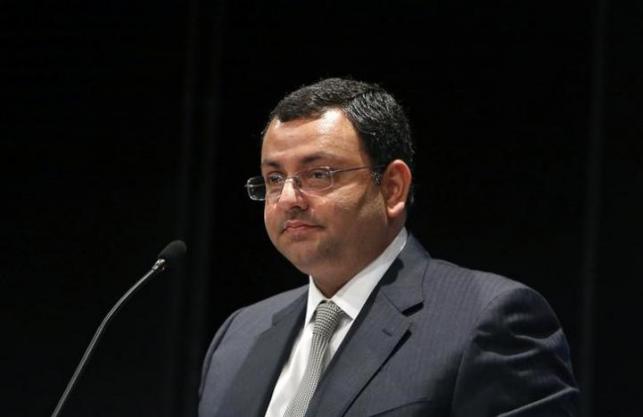
Days after he was ejected as chairman of Tata Sons, Cyrus Mistry has stunned India with a hostile 5-page letter outlining governance failures, poor decisions and looming writedowns at one of the country's most revered conglomerates.
Mistry's emailed parting shot, leaked late on Wednesday, turned into a viral sensation in India by Thursday morning, captivating readers on social media and prompting shocked headlines in leading dailies, as the government told politicians to stay out of what has become a public spat.
The country's two largest exchanges, citing the leaks, have demanded clarity from Tata's 27 listed units.
At least one unit, Tata Steel, dismissed talk of writedowns. But shares in all of the group's major listed companies fell on Thursday.
Tata Sons has not commented since the letter, a defence of Mistry's record, surfaced.
"Mistry tears into Tata," the Times of India daily said.
Public confrontations of this nature are rare in Indian corporate life, particularly when they involve conservative and established conglomerates like salt-to-cars group Tata and a patriarch like Ratan Tata, who has temporarily taken back the helm of the parent group.
"It has taken everyone by surprise. Nobody would have thought such things could happen at Tata," said JN Gupta, a former executive at India's markets regulator and now managing director at Stakeholders Empowerment Services.
Inside Tata, a company that promotes its roots in the heritage and social values of the Parsi community, some workers have bristled at the board's treatment of Mistry: the company is famous for being a loyal employer. But executives also questioned Mistry's efforts to cut back or sell underperforming assets.
Ratan Tata was an acquirer in his time at the top: he oversaw deals like the $12 billion acquisition of Corus, formerly British Steel, in 2007 and the purchase of Jaguar Land Rover a year later.
Mistry by contrast, has tried to rationalise the sprawling portfolio, including selling much of the Corus business in Britain.
"It is like a bunch of finance or hedge fund guys that have walked in and decided to cut everything. This is not the Tata way of doing business," said one source close to the Tata group in response to the letter.
"If you are picking things that are not working and then trying to get rid of them, where is growth going to come from?"
BITTER FRUIT
Lawyers, analysts and headhunters said on Thursday that the letter could mark the start of a bitter legal battle - but it was already a warning to any willing candidates on challenges ahead in running a sprawling and complex group.
"Any candidate that is now in the race or is considered, will pull up and refer to the letter from Cyrus Mistry," said Suresh Raina, managing partner with Hunt Partners, an executive search firm. "The new candidate will be very well primed."
Mistry, chairman of Tata Sons since 2012, accused the board of failing to give him "room to move", and argued Ratan Tata acted as an alternative power centre after officially handing over the reins, driving in particular deals that created two airline businesses.
Its Tata Motors arm extended credit too easily to fuel sales, Mistry said, and when fraudulent dealings surfaced at AirAsia India, they were not acted on fast enough.
Ratan Tata's lawyer Abhishek Manu Singhvi, dismissed the accusations in comments to local television and questioned the purpose of the "blame game"
At least some investors brushed off the letter, arguing they too knew the extent of the balance sheet strain - but also Tata's record for keeping its companies afloat.
"The main question to ask is whether this letter means that Tatas will now change their style of business and will start closing down their loss-making units abruptly," said one debt investor who declined to be named.
"I will continue to buy Tata debt papers until I see some signs they are changing their style of business."
Yet governance experts said Tata would need to tackle the allegations, for which Mistry provides no proof.
"Either Tata comes out and denounces them successfully or they will lose their reputation as one of the best governed companies in the country," Gupta said.
India Ranks 13th In Protection Of Minority Investors
New Delhi:MMNN:26 Oct. 2016

India's global ranking in terms of protection of minority investors has slipped three notches to 13th, but remains much higher than the country's overall 130th rank for ease of doing business.
The sub-ranking for protection of minority investors is topped jointly by New Zealand and Singapore.
Others that ranked higher than India are Hong Kong, Malaysia, Kazakhstan, the UK, Georgia, Canada, Norway, the UAE, Slovenia and Israel.
In the World Bank's latest 'Doing Business' report, India's place remained unchanged from last year's original ranking of 130 among the 190 economies that were assessed on various parameters. However, the last year's ranking has been now revised to 131 from which the country has improved its place by one spot.
The list of countries in the Doing Business 2017 is topped by New Zealand while Singapore is ranked second.
The report said protection of minority investors indicator measures the protection of shareholders against directors' misuse of corporate assets for personal gain and the rights and role of shareholders in corporate governance.
According to the report, India carried out an ambitious, multi-year overhaul of its Companies Act, bringing Indian firms in line with global standards, particularly in respect of accountability and corporate governance practices while ensuring businesses contribute more to shared prosperity through a quantified and legislated corporate social responsibility requirement.
Company regulation is an ongoing process. Since the enactment of the Companies Act, 2013, the corporate affairs ministry issued notifications on a regular basis to address ambiguities in the law. Most notably, two sets of amendments were released in August 2014 and May 2015, highlighting the government's ongoing commitment to reform.
Further, in June last year, it set up a committee tasked with identifying further amendments to the Act and centralising recommendations and concerns from private sector stakeholders and regulatory agencies.
"Despite this piecemeal introduction, it has paid off both in economic terms and in India's performance in Doing Business. India's score increased in 3 of 6 indices of the protecting minority investors indicator set," the report said.
To simplify administrative requirements, the minimum paid-in capital was abolished. To instil greater transparency, the Act increased disclosure requirements, particularly regarding related-party transactions.
To bring Indian firms in line with global standards, the Act added requirements to disclose managerial compensation and have one-third independent directors and at least one woman on the board. Besides, India became the first economy in the world with a quantified and legislated corporate social responsibility (CSR) requirement.
"The case of India serves as a reminder of the time it takes and the challenges inherent to a holistic legislative overhaul. Piecemeal fixes can be a time and cost-effective approach, but only a full-fledged legislative reform gives policymakers the opportunity to innovate and sends a strong signal to the business community," the report noted.
Cyrus Mistry ouster: Tata Trusts has powers to remove Tata Sons chairman
Mumbai:MMNN:25 Oct. 2016

A day after Cyrus Mistry’s ouster as chairman of Tata Sons Ltd, there is a lot of speculation around the boardroom coup, but many of them don’t seem to be grounded in facts.
Separately, a reading of Tata Sons’s articles of association shows that Tata Trusts, its largest shareholder, gave itself special powers in nominating, approving and removing chairmen of Tata Sons in late 2012 – months before Mistry took over the top job in December that year.
For instance, media reports have said there were conflict of interest concerns raised about the award of contracts to companies belonging to the Shapoorji Pallonji Group after Mistry took over.
However, a person close to Mistry said that three years earlier (on 30 October 2013), Mistry had written to Tata group companies that no contracts were to be awarded to the Shapoorji Pallonji Group, run by his family.
Mint couldn’t independently ascertain the veracity of this claim and hasn’t seen a copy of this letter.
Calls made and messages sent to a Tata Sons spokesperson weren’t answered.
Shapoorji Pallonji group companies have had a history of working for the Tatas – even before Mistry’s appointment. For instance, Sterling and Wilson Pvt. Ltd, a part of the group, had (or is in the process) of executing at least seven projects for companies such as Tata Motors Ltd and Tata Power Co. Ltd, according to its web site.
Secondly, there are reports which say that Mistry had cleared the acquisition of Welspun India Ltd’s renewable energy assets without seeking approval from either Tata or other key shareholders.
“All legal and fiduciary requirements with respect to the Welspun acquisition were met as far as shareholders are concerned,” said the person close to Mistry mentioned earlier.
Typically, in a merger and acquisition deal, the board first takes the decision for the deal which is then put up for approval of shareholders.
In any case, giving prior information to a certain set of shareholders, even if they are promoters, would violate the listing obligation and disclosure regulations of the Securities and Exchange Board of India (Sebi).
“Any kind of selective disclosure is prohibited,” said JN Gupta, co-founder & managing director of Stakeholders Empowerment Services, a proxy advisory firm.
Another concern raised over Mistry’s functioning was that he didn’t present a five-year strategy plan to Tata Sons’s board. However, the first person quoted earlier said that the five-year plan was presented at least two months back. Mint couldn’t independently verify this.
On Monday evening, Tata Sons said the board had replaced Mistry as chairman and that Ratan Tata, his predecessor, would be interim chairman. A selection committee including Tata was mandated to find a replacement for Mistry in four months.
Still, while reasons for Mistry’s abrupt removal remain unclear, there is no doubt that the board of Tata Sons has the power to do so. Tata Trusts, which consists of a clutch of trusts such as the Sir Dorabji Tata Trust and the Sir Ratan Tata Trust, owns two-thirds of Tata Sons, and has special rights in the holding company of the conglomerate, especially when it comes to appointment and removal of chairmen, according to the Tata Sons articles of association.
According to article 104B, as long as Tata Trusts has at least 40% shareholding, it can nominate one-third of the directors of the Tata Sons board.
The quorum for a meeting of the Tata Sons board “shall include a majority of the directors who are appointed pursuant to Article 104B.”
The Articles also say that the selection committee will consist of three people “nominated jointly by the Sir Dorabji Tata Trust and the Sir Ratan Tata Trust who may or may not be directors of the company”, one person nominated by and among the board of directors and an independent outsider selected by the board.
More importantly, a majority of the directors nominated by the Trusts have to approve with affirmative voting the appointment and removal of chairmen. Affirmative vote items are those where, in the absence of participation by the concerned directors, the company cannot undertake an action.
Some of these special powers seem to have been added to the articles of association at the time of Mistry’s appointment as chairman and after that. To be sure, these may have also been added to protect the interests of Tata Trusts. Mistry’s appointment as chairman of Tata Sons was only the second time the trusts and the holding company had different chairmen. The first instance was when JRD Tata was the chairman of the Tata Trusts and Ratan Tata was chairman of Tata Sons for a few years in the 1990s.
The article relating to the selection process of chairman and the constitution of the selection committee was added by a special resolution passed at an extraordinary general meeting (EGM) held on 6 December 2012. The article relating to affirmative votes of a majority of directors nominated by the Trusts was passed at an EGM on 9 April 2014.
Perhaps, because of these, a prominent Mumbai-based corporate lawyer said, on condition of anonymity that it wouldn’t be advisable for Mistry to take the legal route.
An official spokesperson for the Shapoorji Pallonji group said in a statement: “Neither the SP Group nor Mr.Cyrus Mistry have made any statement yet. While the circumstances are being studied, there is no basis to media speculation about litigation at this stage. As and when a public statement becomes necessary, it would be made.”
While the boardroom putsch has been brewing for some time, Mistry himself is said to have been unaware of this impending removal. According to the person quoted earlier, Mistry, who had returned from China on Saturday from a business meeting, was informed about this just prior to the board meeting by Tata Sons director Nitin Nohria.
A second person close to Mistry said there has been lapses on both sides but nothing to warrant Monday’s action. He declined to elaborate.
A former Tata group executive told Mint that Mistry was an “aloof figure and chose to operate through the group executive council and his dealings with many of the CEOs were very peremptory and authoritative”.
On Tuesday, Ratan Tata met with CEOs of the operating companies of the Tata group, a move questioned by proxy advisors. That is because even though Ratan Tata is the interim chairman of Tata Sons, he automatically doesn’t become chairman of companies such as Tata Motors and Tata Power.
“Can a holding company call a meeting of group CEOs? I would say no. It is more of a custom and it is not correct,” said SES’s Gupta.
In a letter addressed to “colleagues” on Monday, Ratan Tata said that he agreed to take over as interim chairman “in the interest of and reassurance to the Tata group.” He reiterated that in the meeting with managing directors and senior leaders of Tata companies, a Tata Sons statement said.
“This will be for a short time. A new permanent leadership will be in place,” the statement quoted him as saying. Tata asked group companies to act as leaders in their respective markets and enhance returns to shareholders.
“I look forward to working with you as we have worked together in the past. An institution must exceed the people who lead it. I am proud of all of you, and let us continue to build the group together,” he was quoted as saying. He asked the leadership of the companies to focus on their respective businesses, without being concerned about change in leadership, according to the statement.
Referring to ongoing initiatives in the companies, he was quoted as saying, “We will evaluate and continue to undertake those that are required to. If there is any change, they will be discussed with you.”
The meeting lasted 25 minutes, Bloomberg reported, adding that Tata didn’t disclose reasons for replacing Mistry. The report cited a person with direct knowledge of the matter as the source for the information. Mistry’s replacement was announced on Monday after the close of stock-market trading.
In intra-day trading, shares of Tata Group companies fell on Tuesday. Tata Steel Ltd fell 4%, Tata Global Beverages Ltd declined 3.3%, Tata Power Co Ltd slipped 2%, Tata Consultancy Services Ltd shed 1.2% and Tata Motors Ltd was down 2.2%. The benchmark Sensex index was down 0.1%.
“The biggest issue is that this (Mistry’s ouster) is very sudden and immediate. Stakeholders would want to know the reason for this sudden and immediate change,” said Gupta.
Investment proposals worth Rs 5.50 lakh crore received at GIS 2016, claims Madhya Pradesh CM
Indore:MMNN:24 Oct. 2016
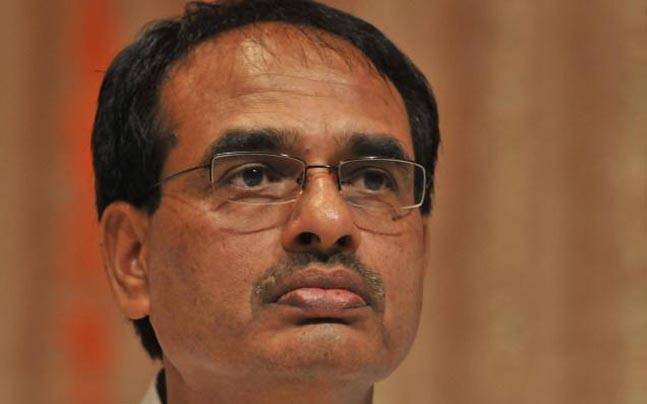
Madhya Pradesh Chief Minister Shivraj Singh Chouhan announced on Sunday that a total of 2628 proposals or 'Intention to Invest' were received by the state government during the 5th Global Investors Summit (GIS) held at Indore on October 22 and 23.
"We had decided against signing MoUs at the meet and instead had Intentions to Invest so that we can follow up on the proposals in a systematic way," he said, adding that the intentions add up to a total of Rs 5,46,847 crore. Also, 30 online applications for allotment of land from the nearly 1,25,000 acre land bank for industries being offered by the MP government were received during the GIS 2016.
MADHYA PRADESH GOVT TO START PORTAL CALLED 'INVEST'
Addressing the media after the conclusion of the GIS 2016, the CM said that based on the feedback given by delegates during the GIS, the state government has decided to start a portal called 'INVEST' that would contain all details of the proposal for investment submitted by a business group. He said this would help in effective and time bound monitoring. Besides this, the state government would appoint a 'relationship manager' for every investment more than Rs 50 crore.
The manager would give feedback to the investor on the status of the investment proposal. Based on feedback, the CM also said that a Ready Made Garment Policy would be soon unveiled by the state government to promote the sector. Land use rules would be simplified to promote investment, especially in the Public Semi Public (PSP) category in which colleges and institutions are set up. He said time bound clearance of land use change cases would be ensured.
Rules pertaining to transfer of development rights would be simplified and the process of securing a clearance from the pollution control board would also be made simpler. Also, the list of non polluting industries where pollution clearance is not requires would be further expanded. The rebates given to various businesses in commercial taxes would continue even after the imposition of GST, said the CM.
Further, the CM said, based on the discussions with investors, information pertaining to the availability of minerals in the state would be made available and the minimum number of seats in theatres to qualify as multiplexes and thereby get rebates would be reduced to 200 from the present 500. The CM said that to prevent harassment and treatment as criminals of investors, the state government will work out a system that will prevent arrest in case it is found that the violation of a commercial law was not deliberate.
INDUSTRIAL, AGRICULTURE SECTOR WITNESSES GROWTH
The CM said that in the intervening 2 years between GIS 2014 and 2016, work has commenced on investments worth Rs 2,71,000 crore and production has commenced in units that have invested about Rs 50,000 crore. He said the GDP of MP has increased from Rs 1,50,000 crore to Rs 5,65,000 crore in the last 12 years. Industrial sector has grown at 8 per cent while agriculture is growing at 20 per cent in the state in 2014-2015.
Earlier during a valedictory function, External Affairs Minister Sushma Swaraj, Urban Development Minister Venkaiah Naidu, Minister for Environment and Forests, Anil Dave, Petroleum Minister Dharmendra Pradhan and Minister for Social Justice Thawarchand Gehlot appealed to investors to put in their money and faith in Madhya Pradesh and praised the CM and government for organizing the event. Sushma Swaraj said that for the first time the MEA has a separate desk for facilitating states with investment proposals from overseas.
The CM said that he was happy with the progress of industrial sector in MP and added that the first GIS in 2007 was attended by 300 delegates while GIS 2016 was attended by a total of about 5000 delegates from India and 42 countries attended the GIS 2016. "this is an indicator that MP is doing well," he said. He said that for the first time the Department of Industrial Planning and Policy of the Union government had organized a 'Make in India' convention on the sidelines of an investor meet organized by a state government.
A CEO conclave attended by about 130 CEOs was held on October 21. A total of 326 Business to Business meetings were also held during the GIS 2016.
MP Global Investor Summit kicks off, 150 CEOs may participate
Indore:MMNN:22 Oct. 2016
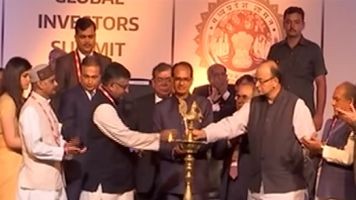
A 2-day Global Investor Summit organised by the state government of Madhya Pradesh at its commercial capital Indore kick-started today. the state expects to host about 150 CEOs and over 3,000 delegates including the Union Finance Minister at the event.
While the state itself plans to invest Rs 75,000 crore over the next 4 years in infrastructure development, the Summit aims to garner as much investments from the business community across the world as possible in some key areas like food and food processing, and automobiles among others.
Some of the key speakers at the event, Baba Ramdev of Patanjali, Kumar Mangalam Birla, Chairman of Aditya Birla Group, Anil Ambani, Chairman of ADAG and Alok Sharma, UK's Minister for Asia among others listed out their investment plans in the state.
Located in the centre of the country, Madhya Pradesh will become a supply hub for companies transporting goods once the Goods and Services Tax (GST) is implemented making the country one big marketplace, Finance Minister Arun Jaitley said on Saturday.
Addressing the 5th Madhya Pradesh Investment Summit in Indore, Jaitley said the GST will hopefully be implemented by next year which will make the country one big marketplace.
“Once the GST rolls out, hopefully by next year, India will become one big market. Companies transporting goods from north to south and east to west will need a hub at the centre,” Jaitley said on the first day of the two-day summit that aims to attract global investment.
“Madhya Pradesh is suitable located to become a supply hub,” he added.
At the summit, the state government will present a report card on the status of investment commitments made at the four previous such investor gatherings.
In the 2007 summit, MP signed investment agreements worth $18.3 billion and the investment commitment doubled to $36 billion at the next summit in 2010 and further to $44 billion in 2012. The last meeting in 2014 saw signing of agreements worth $66.1 billion.
Madhya Pradesh has been one of the fastest growing states in India, recording an average annual growth of 9.5 per cent in its gross state domestic product (GSDP) from 2013 to 2015. The growth rate in 2015-16, was 10.5 per cent against the national growth of 7.3 per cent.
Over 3,000 delegates including 500 from five partner countries—the UK, Japan, South Korea, Singapore and United Arab Emirates—are attending this year’s summit.
Debit Card Breach Could Dent PM Modi's Push To Go Cashless: Foreign Media
MMNN:21 Oct. 2016
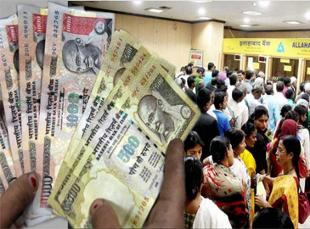
India's quest to become a cashless economy has been dealt a blow by a data breach that compromised as many as 3.2 million debit cards.
Prime Minister Narendra Modi urged Indians in a radio address in May to use cashless payments to discourage corruption and keep track of money. Convincing them may get harder after India's national card payments network said that the data violation led to fraudulent transactions, mainly in China and the U.S.
The illegal withdrawals were limited to 641 customers of 19 banks, and the total amount involved was just 13 million rupees ($194,000), the National Payments Corp. of India said in a statement late Thursday. Yet the breach could reduce faith for cashless transactions in a country where Google Inc. estimates the digital payments industry will grow 10 times to $500 billion by 2020.
"Given that most Indians are in the villages and not tech savvy, there will be lot of apprehension regarding usage of digital money and cards after this breach," said VVSSB Shankar, founder of i-lend, India's first peer-to-peer lender. "This is a major setback for India's fight against the cash economy. Banks will have to increase security measures and improve efforts to educate people to tide over this."
Cash King
The South Asian nation has been aggressively pushing cashless payments, touting its so-called JAM mechanism that involves bank accounts for the poor, biometric identity cards and high mobile phone usage. About 98 percent of consumer payments are still made with cash, a report by PricewaterhouseCoopers Plc showed in 2015. That's even with 697 million debit cards and 26 million credit cards in the country at the end of July, RBI data show.
Customers needn't panic, A.P. Hota, managing director and chief executive officer of National Payments, said in the statement. Banks have advised customers to change their card security codes, and in cases where customers couldn't be contacted, have blocked their cards and are issuing new ones, the payments system operator said.
State Bank of India, the nation's largest lender, said in a statement that it had blocked the cards of certain customers as a precautionary measure. ICICI Bank Ltd. said it had changed codes of cards used at affected ATMs.
Defense Lines
"Banks have taken steps to isolate affected cards and accounts," said Tirthankar Patnaik, Mumbai-based chief strategist and head of research at Mizuho Bank Ltd. "Also, in India, the bank customer has two lines of defense: a mandatory shadow reversal in case the customer notifies the bank of a breach and deposit insurance in case of an irreversible loss."
The Reserve Bank of India August blamed an "unusually high and protracted" demand for notes and coins for slowing down the velocity of money, or the pace at which commercial lenders make fresh loans, which in turn become new deposits for the banking system and lead to further credit expansion.
Currency in circulation is more than nine times what it was 17 years ago. By comparison, China's yuan pile has increased less than sixfold, even though the mainland's economic expansion has outpaced India's.
Post SBI security scare: Here is how you can secure your debit cards
Mumbai :MMNN:20 Oct. 2016

Days after the State Bank of India (SBI) blocked 6,00,000 debit cards over reports of security breach, clouds of suspicion hover above the heads of customers who fear falling prey to financial fraud.
"Card network companies like the NPCI, Mastercard and Visa had informed various banks in India about a potential risk to some cards owing to a data breach. Accordingly, State Bank of India (SBI) has taken precautionary measures and blocked cards of certain customers identified by the networks,"said a company statement on Thursday.
The SBI has asked its customers to use its fraud perevention facilities, adding that it was in the process of issuing new cards to its customers at no cost.
"Cardholders can generate the PIN through an SMS or by using the bank'sinteractive voice response system and internet banking. Alternatively, they can collect the PIN phycially from their home branch,"said the statement further.
According to SBI, customers can further choose their channel of transaction- ATM , PoS or eCommerce- and restrict their usage within domestic borders and beyond in order to ensure secure transactions. They can also set a card limit on their own by using the bank's internet banking service.
However, a series of measures can be taken to guard oneself against data theft and financial misuse.
Changing the ATM pin frequently is one way of keeping one's coffers safe. How often should you change your ATM PIN? The answer is-every three to six months or at least once a year according to the standard advice given by cyber experts.
One might ask as to why the banks are being overly cautious? Well, considering the reports of breach of data by financial institutions in the last few months, the threat of a security breach seems all too real to diregard for the customers.
Even Axis Bank had recently informed the Reserve Bank of India that it had experienced a cyber attack.
Reports of from several account holders complaining of their ATM card details being compromised have also surfaced, following which several banks have asked their customers to change their card security details and stick to their own ATM networks. According to reports, the overall number seems to be 3.2 million so far.And, perhaps, still counting.
According to Reshmi Khurana, Managing Director and Country Head-Operations for Kroll Advisory Solutions in India, there have been reports of customers reporting transactions on their debit cards in China and that is how banks came to know of the breach of data and in turn complained to payment services.
“While it is not confirmed, the breach of data seems to on account of a malware inserted in a white label ATM network, which is why banks are cautioning their customers to stick to their own bank’s ATM network and not use non-bank ATMs,’’ said Khurana.
An ATM breach means that PIN numbers of all customers using a partilcuar ATM network, that is infected, stands compromised.
Hence, it is advisable that one changes the PIN number as soon as one gets an alert from their respective bank. If possible, cancel the ATM card and apply for a new one.
Also, avoid using the same PIN for multiple bank accounts. Besides, signing up for SMS alerts from the bank is really helpful as it swiftly prompts a meassage once a transaction gets carried through. This way even if there is fraud, at least you will come to know of it immediately and alert your bank to block your card to prevent further loss.

For most customers, using the card at an ATM would seem like a safe transaction since the ATM is monitored by the bank. But it is not always the case. For instance, about 70 per cent of ATMs in India are running on outdated Operating Systems (OS), which makes it easier to make fraudulent transactions.
“Microsoft has withdrawn all support to Windows XP about two years back. But there are still many ATMs running on Windows XP OS, which makes them vulnerable to malware and frauds,’’ points out Harshil Doshi, Strategic Security Solutions Consultant, Forcepoint, a data privacy and security company.
Most banks also use ATM machines of different vendors due to which standardization of networks and technology is not possible. This too opens up the system to possible fraud, Doshi adds. Fraudsters have developed devices to infect all kinds of ATMs.
“Once the malware is deducted, the bank or the payment services company will fix it immediately. But the problem is to identify the malware. While such incidents are common overseas, now they are increasingly happening in India too as banks adopt more technology and transactions become digital. There is a need to be more proactive and put the proper checks in place,’’ Khurana adds.
Rooftop solar power capacity crosses 1 GW mark
New Delhi :MMNN:19 Oct. 2016

India's rooftop solar energy capacity has crossed 1 gigawatt (GW) mark this year with 513 MW generation capacity added over the past 12 months, says Bridge to India report.
"As per the report, titled 'India Solar Rooftop Map', India's rooftop solar capacity has crossed 1 GW mark this year," said consultancy services provider Bridge to India.
India has added 513 MW of rooftop solar capacity over the past 12 months, growing at 113 per cent over previous 12 months, reaching total installed capacity of 1,020 MW, according to the report released today at Intersolar Mumbai.
Last year's capacity addition is more than the addition of all previous years put together. 22 per cent of capacity added through PPA (power purchase agreements) based projects.
CleanMax, Amplus Solar, Cleantech Solar, Azure Power, Rays Expert and Hero Future Energies are some of the leading companies offering PPAs.
The rooftop solar market growth is directly linked to improving economics of rooftop solar. Most commercial and industrial consumers can reduce their power bills by 20-30 per cent with rooftop solar power.
It said this growth is expected to continue in the years to come and the market is expected to reach a total capacity of 12.7 GW by 2021.
The report also highlights that commercial and industrial consumers dominate the market with 63 per cent of installed capacity. Grid parity for these consumers has now been achieved in 17 out of the 19 largest states in India.
In states such as Maharashtra and Haryana, tariff differential between grid power and rooftop solar power can be as high as 30 per cent, it said.
This has been much steeper than what most analysts had earlier predicted and has helped in achieving the existing growth rate, it added.
Bridge to India MD Vinay Rustagi said, "Rooftop solar has been a side-story in the Indian solar sector so far but that is beginning to change now. The sector is growing rapidly and beginning to realise its potential, thanks largely to increasing cost competitiveness of rooftop solar power vs grid power."
Rustagi further said,"We expect rooftop solar to outpace growth in the utility solar market in the coming years. The government has announced attractive policies such as net metering, subsidies for select customers and cheaper debt financing for the sector although there is huge scope for improvement on every front."
There is also substantial rooftop capacity being created in the government sector itself, he added.
Tamil Nadu, Maharashtra and Gujarat are leading in terms of total installed capacity. The government rooftop solar segment has grown to over 10 per cent in total installed capacity.
RBI to cut rates in early 2017, aided by weak inflation
Bengaluru:MMNN:18 Oct. 2016

The Reserve Bank of India is expected to take advantage of expectations that inflation will remain low in the near-term and cut interest rates again early next year with an aim to boost already-solid growth a little bit more, a Reuters poll found.
New RBI governor Urjit Patel and his six-member Monetary Policy Committee used the same rationale for their surprise 25 basis point (bps) cut to 6.25% earlier this month, the lowest since November 2010.
Inflation cooled to a 13-month low of 4.31% in September and the latest Reuters poll of economists expect it to average 4.8% in the January-March quarter of 2017, just under the RBI’s near-term target.
“The significant run-up in CPI inflation between April and July was mainly driven by food prices. But thanks to normal rains, it could reverse quickly, taking inflation to well below (the) RBI’s early-2017 target of 5 percent,” wrote Pranjul Bhandari, chief economist for India at HSBC.
Since the start of 2015, the RBI has chopped 175 bps from its key repo rate. But after the next expected cut to 6.0%, the central bank is forecast to hold rates steady for the rest of the 12-month survey horizon.
A further rate cut would help the Indian government in its efforts to boost economic growth to above 8%.
It was last measured at 7.1% in the March-June quarter, one of the strongest rates in the world but still not fast enough to create enough new jobs to absorb all the one million people who join the workforce every month.
The poll forecast gross domestic product would grow 7.7% in the fiscal year to end-March 2017 and 7.8% in the following year, slightly more than the International Monetary Fund’s latest projection of 7.6% for both years.
HSBC’s Bhandari, who is forecasting 7.3% growth for next year, wrote: “...higher urban consumption supported by government wage hikes, sufficient banking sector liquidity and robust FDI inflows are likely to keep growth buoyant.”
India’s government, led by Prime Minister Narendra Modi, has introduced a raft of new economic policies since coming into power two years ago, most importantly a goods and services tax bill that will replace multiple federal and state levies and transform the economy into a common market.
RCom to sell 51 p.c. in tower assets to Brookfield for Rs 11,000 crore
MUMBAI:MMNN:14 Oct. 2016

Anil Ambani-led Reliance Communications Ltd. (RCom) has signed a non-binding term sheet with Canadian Brookfield Infrastructure Group (Brookfield) to sell a majority 51 per cent stake of its nationwide tower assets and related infrastructure for cash consideration of Rs. 11,000 crores, making it one of the largest FDI in infrastructure sector.
Under the term sheet, the specified assets are intended to be transferred from Reliance Infratel Ltd. (RITL) on a going concern basis into a separate SPV, to be owned by Brookfield, said a RCom statement. It added that RCom will continue as an anchor tenant on the tower assets, under a long term MSA, for its integrated telecommunications business.
RCom and Brookfield expect considerable growth in tenancies based on increasing 4G offerings by all telecom operators, and the fast accelerating trends in data consumption, which are expected to contribute to significant growth in revenues and profitability for the towers business in the future, said the statement.
RCom and Brookfield also see several opportunities for consolidation in the towers industry in India that will further enhance growth and value creation in the future. RCom intends to utilize the proceeds of the proposed transaction solely to reduce its debt.
RCom will retain 49 per cent stake in the business to be monetised later, as it expects considerable value creation in the next couple of years, in view of likely significant growth in tenancies owing to spread of 4G networks and fast increasing data consumption.
RCom will utilize entire Rs. 11,000 crore to reduce debt and the combination of RCom’s wireless business with Aircel will reduce RCom debt by another Rs. 14,000 crore.
These 2 transactions put together will reduce RCom debt by 60 per cent from Rs. 42,000 crore to Rs. 17,000 crore, while RCom will continue 50 per cent stake in combined wireless business, and 49 per cent stake in Towers business.
Besides, RCom will retain 100 per cent of its highly profitable Indian Enterprise business, Data Centres, Optic Fibre, global submarine cables, GCX, amongst other.
“RCom is planning to monetize its real estate to raise another Rs. 5,000 crore, and reduce overall debt from Rs. 17,000 crore to Rs 12,000 crore,” a source told The Hindu.
Analyst believes that RCom financials will improve in FY17 given it does not require any major spend for spectrum or capex in the future, as post the merger with SSTL and Aircel being completed, and with spectrum sharing already implemented with RJio, it has extensive 2G, 3G and 4G networks already operational across the country. “RCOM will emerge as one of the stronger telecom operators in the country post the strategic transactions that are under implementation,” said Paras Bothra, vice president of equity research at Ashika Stock Broking Ltd
RCom shares were trading up 2 per cent at Rs 48.75 in an almost flat Mumbai market on Friday noon.
The proposed transaction is subject to definitive documentation, customary approvals and certain other terms and conditions. Accordingly, there can be no certainty that a transaction will result, said the company statement adding that further announcements will be made at an appropriate stage.
7th Pay Commission: Modi govt's Diwali bonanza to armed forces! Indian Soldiers to get 10% arrears
Mumbai:MMNN:13 Oct. 2016
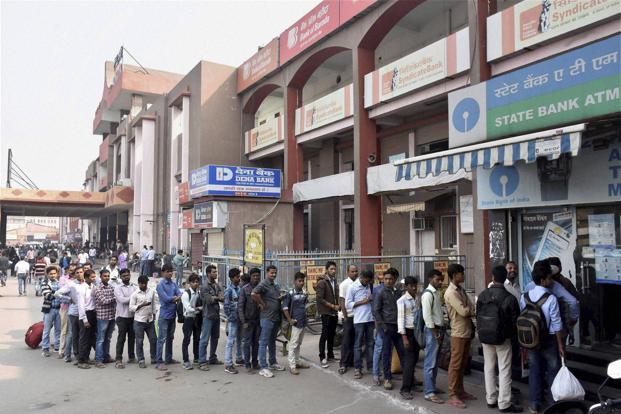
In a bid to laud the efforts of the Indian Army, the government has announced to pay 10% arrears to the soldiers.
As per a report of the Defence Ministry, the President has sanctioned the payment of the arrears.
Calculated from January 2016 onwards, arrears will be 10% of the current pay of the soldiers, including dearness allowance.
However, the Army has been unhappy with the approval of the 7th Pay Commission recommendations, as it does not take into account the demands which were put forth by the forces.
Defence Minister Manohar Parrikar had assured that all the particulars mentioned would be taken up at the highest level.
Parrikar also held various meetings with members of Armed Forces Pay Commission Cell and Service Chiefs to discuss about the same.
Watch out Ola, Uber's battle for market share in India is getting aggressive
Mumbai:MMNN:12 Oct. 2016

Ever since the taxi hailing application company Uber gave up on the Chinese market a few months back following intense competition from the local player Didi Chuxing, it became more or less clear that the focus for the US-based firm will now shift to the Indian market.
But here too, the world's largest startup company boasting a valuation of $69 billion, realises the growing competition from the domestic player Ola.
In China, Uber couldn't stand up to the growing onslaught from the deep-pocketed Didi, prompting the former to eventually merge its business in the Dragon nation.
With Uber exiting China, the company has got enough room now to focus on India.
As a recent Bloomberg report says, "India will be crucial in terms of both demonstrating success in large international markets and long-term growth potential".
Unlike Didi Chuxing, Ola, Uber's rival here, doesn't have deep pockets. Backed by venture capitalist, Ola has a war-chest of $1.2 billion, while Uber will divert a big portion of $10 billion it raised from Didi into the Indian market.
With the battle lines clearly drawn, Uber has been fast expanding in India and now has presence in 28 cities and handled 5.5 million rides per week in August, says the Bloomberg report.
While India's market is poised to grow at $10 billion, Uber has been making a strong pitch to enter other transport areas besides the traditional cab service via its mobile app.
According to a report in Mint, Uber plans to introduce buses and mini-vans for people through its ride-hailing app, and the service would be called Uber Everything.
“The next big innovation that the company plans to introduce is Uber Pool in buses and mini-vans,” Mint report said.
The new initiative would be similar to its UberHop service, which functions more like a scheduled bus service, the report says.
Uber also looks to increase employee base at its Bengaluru engineering centre and also plans to recruit a million drivers over the next two years.
Last month, Uber also said it is betting big on its enterprise offering -- Uber for Business (U4B) -- to drive its growth in the country. In the nine months of operations, Uber for Business has seen a 50 percent month-on-month growth and the company is looking at scaling the offering further.
'Uber for Business' also allows corporates to automate uploading of employee lists and information that ensures only authorised employees have access to the company's U4B account.
"U4B was developed to provide an enhanced experience to companies, and employees, wanting to use Uber's global network for work travel. The U4B platform also includes a versatile and powerful travel dashboard that business administrators can use to manage budgets, enforce ride policies, and monitor usage and spends," Uber Asia Pacific Head (Uber for Business) Arjun Nohwar said.
Further, the US tech heavyweight is also making an aggressive drive into meal delivery backed by a wave of staff recruitment with plans to enter at least 22 new countries and take on local rivals.
Rupee trades at 66.61 per US dollar
Mumbai:MMNN:10 Oct. 2016
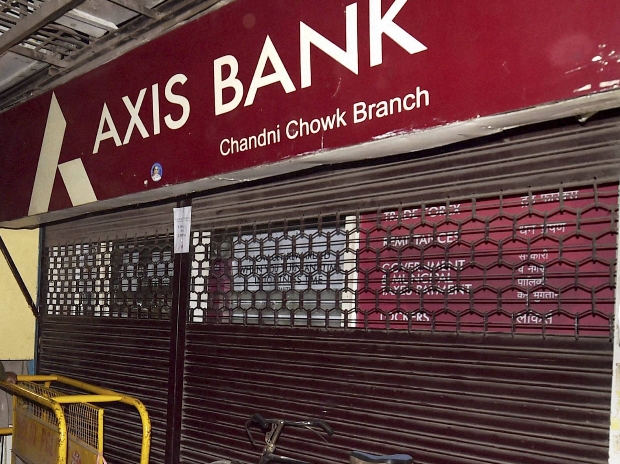
The Indian rupee strengthened against the US dollar tracking the gains in the local equity markets and ahead of the Index of Industrial production (IIP) data for August due on Monday after 5.30pm.
The home currency opened at 66.57 a dollar. At 2 pm, the rupee was trading at 66.61 against the US dollar, up 0.12% from its previous close of 66.69.
According to Bloomberg analyst poll, IIP will be at -0.3% in August as compared to -2.4% in July.
Traders are also cautious ahead of the consumer based and wholesale based inflation data on 13 October and 14 October, respectively for the month of September. According to Bloomberg analyst expectations, CPI will be at 4.70% in September against 5.05% a month ago. WPI will be at 3.85% in September versus 3.74% in August.
India’s benchmark Sensex Index was trading at 28,105.14 points, up 0.16% from its previous close. So far this year, it has gained 7.61%.
The benchmark 10-year government bond yield was trading at 6.697% compared to Friday’s close of 6.735%. Bond yields and prices move in opposite directions.
The rupee is down 0.68% till date this year, while foreign institutional investors have bought $7.75 billion in equity and sold $300.4 million in debt markets.
Asian currencies rising modestly after slower US job growth and as investors reassess Trump’s chances after US presidential debate.
South Korean won was up 0.641%, Malaysian ringgit 0.215%, Indonesian rupiah 0.046%. However, Thai Baht 0.556%, China renminbi 0.465% and Japanese Yen 0.204%.
The dollar index, which measures the US currency’s strength against major currencies, was trading at 96.667, up 0.04% from its previous close of 96.125.
Traders are cautious following Friday’s report on US employment that came in below expectations but was viewed as strong enough for the Federal Reserve to consider raising interest rates by the end of the year. The US economy added 156,000 jobs last month, while the unemployment rate ticked up to 5% as more workers entered the labour market.
India's forex reserves rise to $371.99 bn last week; overseas currency assets at $346.71 bn
Chennai:MMNN:8 Oct. 2016

India's foreign exchange reserves went up to $371.99 billion as on 30 September, the Reserve Bank of India (RBI) announced.
According to data released by the RBI on Friday, the reserves stood at around $371.99 billion as on 30 September as against $370.76 billion as on 23 September.
On 30 September, the foreign currency assets stood at $346.71 billion, gold at $21.40 billion, special drawing rights at $1.48 billion and the reserve position in the International Monetary Fund (IMF) at $2.38 billion.
The reserves as on 23 September comprised of foreign currency assets at $345.24 billion, gold at $21.64 billion, special drawing rights at $1.49 billion and the reserve position in IMF at $2.39 billion.
IRCTC plans insurance cover for mobiles, laptops
NEW DELHI::MMNN:7 Oct. 2016
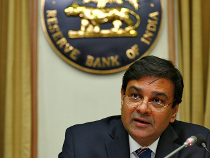
Buoyed by the success of the 92 paise travel insurance policy for passengers, IRCTC is now planning to launch another scheme for passengers' gadgets like mobile phones and laptops.
The first round of meeting in this regard was held between IRCTC officials and insurance companies, IRCTC Chairman and Managing Director A K Manocha said. "There are some concerns that insurance companies have about false claims.
We have shared a few ideas with them and also asked for their suggestions. Offering this policy to credit card holders or government officials in the initial stage is one of the ideas we have floated to mitigate cases of false claims," he said.
Manocha wishes to make this scheme available both in cases of rail accidents as well as of thefts. He said, "I am trying hard to push companies to give insurance cover in instances of theft as well. So far, they have expressed their willingness to offer it only in cases of mishaps."
The proposal follows the success of the travel insurance scheme launched by IRCTC last month. Already over one crore passengers have opted for it.
The policy unveiled last month offers insurance cover of up to Rs 10 lakh for a premium of 92 paise in case of accidents or an untoward incident like terrorist attack, dacoity, rioting, shootout or arson.
To promote this scheme during the festive season, IRCTC has in fact decided to reduce the premium from 92 paise to 1 paisa for tickets booked between October 7 to October 31 as part of its Diwali bonanza.
Technology, Ease Of Business Will Help Reach 8 Per Cent Growth: Nirmala Sitharaman
NEW DELHI::MMNN:6 Oct. 2016

Use of technology, transparent processes and ease of doing business will help India pull off 8 percent growth over the next couple of decades, the government on Thursday said.
Commerce and Industry Minister Nirmala Sitharaman said states are also working in concert with the centre in this regard.
"It (8 percent growth) is achievable and with this commitment, the government is working. And across the states, we find that urge now that they want to get out of the rigmarole and see brighter ways," she said in Delhi at the India Economic Summit jointly organised by Confederation of Indian Industry (CII) and World Economic Forum (WEF).
According to the minister, awareness about the issues and difficulties on which the centre and the states need to work is helping politically too. "... the kind of issues on which we have to come together and get over the difficulties are actually helping politics. If only you succeed in removing these obstructions and if you are committed to moving forward on using technologies, making sure transparent processes are established, I can see that 8 percent growth is moving. So, it is achievable," she asserted.
She further said the government is working on three important pillars, including the goods and services tax, JAM (Jan Dhan, Aadhaar and Mobile) and ease of doing business to promote growth and investments.
The government is using technology to remove corruption and bring in transparency, the minister said, adding that "we need to work harder and we need to take the states on board and we are working together".
In the next 4-5 months, "our attention would be to work together with them, take out all those which are obstructionists and ensure businesses feel far more assured that the ease is actually coming in".
Foreign Direct Investment (FDI) is coming in, "but we have to translate that into meaningful investments and rapidly get them on to translate into job creation... so, these are things on which we are working," Ms Sitharaman said.
"There is a comprehensive agenda of work which is pending, which is ongoing but more to achieve. So, there are going to be an inter-ministerial work assessment and also ensuring work moves fast. The inter-ministerial will also be happening just to ensure this goal is achieved."
Ms Sitharaman added that South and South-East Asia are going to be the engine of growth for the world.
Automation threatens 69% jobs in India: World Bank
Washington:MMNN:5 Oct. 2016

Automation threatens 69% of the jobs in India, while 77% in China, according to a World Bank research which has said that technology could fundamentally disrupt the pattern of traditional economic path in developing countries.
“As we continue to encourage more investment in infrastructure to promote growth, we also have to think about the kinds of infrastructure that countries will need in the economy of the future. We all know that technology has and will continue to fundamentally reshape the world,” World Bank president Jim Kim said.
“But the traditional economic path from increasing productivity of agriculture to light manufacturing and then to full-scale industrialisation may not be possible for all developing countries,” Kim said in response to a question at the Brookings Institute during a discussion on extreme poverty on Tuesday. “In large parts of Africa, it is likely that technology could fundamentally disrupt this pattern.
Research based on World Bank data has predicted that the proportion of jobs threatened in India by automation is 69%, in China it is 77% and in Ethiopia, the percentage of jobs threatened by automation is 85%,” he said.
“Now, if this is true, and if these countries are going to lose these many jobs, we then have to understand what paths to economic growth will be available for these countries and then adapt our approach to infrastructure accordingly,” Kim said.
He said one child policy could have been reason of sharp decline in child stunting and malnutrition, which is now at 10%.
“The one child policy could have been part of it, but anyway the point is, that if you look at educational outcomes and things like child stunting, India is at 38.7% child stunting, they are literally walking into the future with 40% of their workforce probably being unable to compete in the global digital economy, whereas China over the years has brought it down very, very low,” Kim said.
“In India, it is probably partly because of sanitation that children are often in a just constant diarrheal stage, because of open defecation. There is a lot of different pieces of it. But I have been saying to the leaders of these countries that have these high stunting rates, there is like an emergency for you, you have got to tackle it,” Kim said.
RBI monetary policy: Falling inflation gives room to Urjit Patel to cut rates; will he do it today?
New Delhi:MMNN:4 Oct. 2016
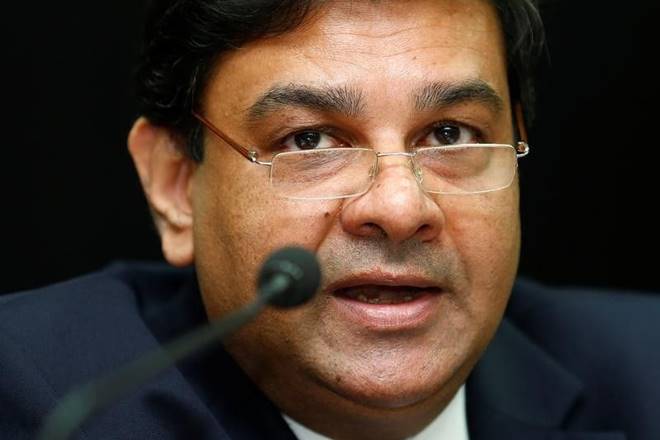
The Reserve Bank of India (RBI), at the bi-monthly monetary policy meet today, will announce its decision on interest rates as set by the six-member Monetary Policy Committee (MPC). This is also governor Urjit Patel’s first monetary policy after he has taken charge as the RBI governor in September.
Theoretically, the time is ripe for another rate cut now, but the RBI may wait till December to do so.
Since January 2015, the RBI has cut the repo rate by a cumulative 150 bps. The rate currently stands at 6.5 percent. The Consumer Price Inflation (CPI) trajectory, gives one strong reason to expect a rate cut at the earliest. At the last reading (in August), the CPI inflation fell to 5.05 percent compared with 6.07 percent in July.
The RBI has a March, 2017 target of 5 percent inflation. Most economists believe that inflation might well fall below that level during this period given that monsoons this year have been favourable, enabling better crop output. Food price inflation, the main villain in the inflation story, has eased considerably in the recent past, giving room for further rate cuts.
Most economists, however, expect the Monetary Policy Committee (MPC) to advise RBI to hold its rates for now and cut rates in the December policy. This is because by then the RBI will have more data on the trend of food prices, the impact of monsoon and can weigh other upside risks to inflation such as the impact of the 7th Pay Commission. What is also critical is besides the announcement on interest rates, the language of the policy too will also be watched closely for cues on the future course of RBI’s action on various areas. This will include any likely change in the course of ongoing bad loan clean-up exercise and RBI’s outlook on economy. “The Reserve Bank of India’s (RBI) policy communique will be more critical than its rate action for the market to ascertain the future path of interest rates,” India Ratings and Research said in a note.
“There are some good reasons why a rate cut could materialise in the upcoming October 4 meeting. The recent fall in food prices has been sharper than expected, and cutting earlier keeps the RBI a safe distance away from possible Fed hikes. Yet our base case is for a rate cut in December. This is because, by December, two new inflation prints which are expected to be well below 5 percent will be available,” said Pranjul Bhandari, Chief India Economist, HSBC and Dhiraj Nim, economics associate at HSBC in a note.
“Moreover, given that the RBI was highlighting upside risks until its last meeting, it may prefer to move in steps, i.e. change the outlook on inflation now and cut rates in December. Furthermore, to get more bang-for-the-buck for monetary transmission, the RBI may want to get through the period of foreign currency non-resident (FCNR) deposit outflows before it cuts more,” the HSBC economists said.
In the 9 August monetary policy, the RBI had highlighted the upside risks to inflation. “Risks to the inflation target of 5 percent for March 2017 continue to be on the upside.
Furthermore, while the direct statistical effect of house rent allowances under the 7th CPC’s (Central Pay Commission) award may be looked through, its impact on inflation expectations will have to be carefully monitored so as to pre-empt a generalisation of inflation pressures. In terms of immediate outcomes, much will depend on the benign effects of the monsoon on food prices,” the RBI said.
In a note, CARE ratings too said chances are high for a status quo in rates. “While we believe there will be no change (70 percent probability), the chances of a rate cut (30 percent probability) has surfaced after border tensions escalated last week. Also, given that this would be the start of the bust season, there would also be a justification on the economic front,” said CARE. That said, one cannot rule out a surprise rate cut if the MPC chooses to cut rate now before the US Fed rate action comes in December. One must remember that there has been calls for rate cuts from the government in recent months.
The bottomline is this: Going by the inflation trends, one shouldn't be surprised if Urjit Patel announces a rate cut at 2:30 pm for reasons as explained above. But chances are more for the rate cut bonanza to come in December.
Rafale Deal: Reliance, Dassault Aviation Set Up Joint Venture
New Delhi:MMNN:3 Oct. 2016

In a major deal for India's private defence industry, Anil Ambani-led Reliance Group and Rafale maker Dassault Aviation today announced a joint venture (JV) that will be a "key player" in execution of offset contract worth about Rs. 22,000 crore as part of the fighter jet deal.
The announcement of the JV, Dassault Reliance Aerospace, comes within days of India and France on September 23 signing an agreement for 36 Rafale fighter jets at a value of euro 7.87 billion, or about Rs. 59,000 crore.
The agreement includes a 50 per cent offset obligation, the largest-ever offset contract in the history of India.
The main point of the offset agreement is 74 per cent of it has to be imported from India, which means direct business worth around Rs. 22,000 crore.
The offset, spread over seven years, will be finalized soon.
There is also a technology-sharing component, which is being discussed with the Defence Research and Development Organisation (DRDO).
Other companies involved in the Rafale deal include French firms MBDA and Thales, besides Safran, which too will be part of the overall offset obligation.
The Dassault Reliance Aerospace joint venture will be a key player in the execution of offset obligations, a joint statement by the companies said.
The development has come as a boost to the Reliance Group, which entered the defence sector only in January 2015.
"This new joint venture called Dassault Reliance Aerospace will support Prime Minister Modi's Make in India and Skill India policies and develop major Indian programmes with high levels of technology transfer to benefit the entire aerospace sector," it added.
The proposed strategic partnership between Dassault and Reliance will also focus on promoting research and development projects under the IDDM programme (Indigenously Designed, Developed and Manufactured), a new initiative of Defence Minister Manohar Parrikar.
"The formation of this joint venture with Reliance Aerospace led by Anil Ambani's Reliance Group illustrates our strong commitment to establish ourselves in India and develop strategic industrial partnerships under the Make in India policy promoted by the Indian government," Eric Trappier, Dassault Aviation Chairman and CEO said.
"We are delighted to partner a world leader in aviation like Dassault Aviation. This is a transformational moment for the Indian aerospace sector and Reliance Infrastructure's subsidiary Reliance Aerospace," said Anil Ambani, Chairman of the Reliance Group.
Better Targeting Of Kerosene Subsidy Is Government's Next Agenda: Arun Jaitley
New Delhi:MMNN:1 Oct. 2016
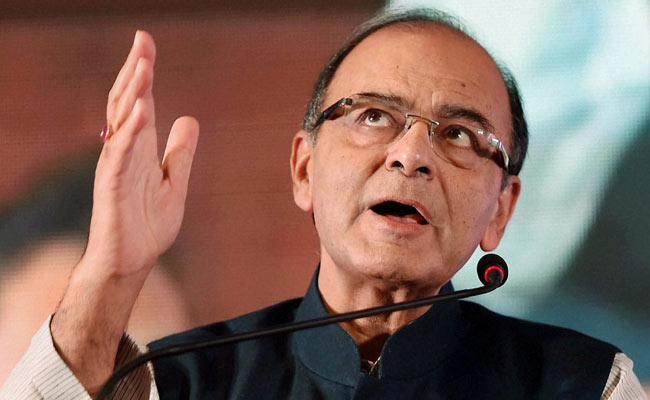
After the initial experiment in food and fertiliser, better targeting of kerosene subsidy is next on government agenda to plug diversion and black marketing of the fuel, Finance Minister Arun Jaitley said.
"Kerosene in some parts of the country is used as fuel, and in many parts... is misused. There is a huge amount of diversion... So, states are making efforts to become kerosene free because of a lot of diversion taking place," he said at an event of the Observer Research Foundation in New Delhi today.
He specifically made a mention of Union Territory of Chandigarh and Haryana trying to become kerosene free.
"That's one of the next items which is on the agenda as far as rationalisation is concerned, but there is still a section of society which uses kerosene as a fuel and therefore, you have to find a mechanism (as to) how to deal with the kerosene problem," he said.
With an aim to take PDS kerosene to the targeted beneficiary, it has been decided to implement the direct benefit transfer in kerosene (DBTK) in 39 districts in 2016-17. The districts spread across nine states have been identified in consultation with local governments, including Punjab, Gujarat, Himachal Pradesh, Madhya Pradesh and Chhattisgarh.
Giving examples of on-boarding of various government schemes on DBT, he said the government is now experimenting in various areas.
"Somewhere fertiliser is being experimented, somewhere food... One of the the great advantages would be to plug leakages, eliminate corruption and duplicacy and better targeting of subsidy," Mr Jaitley added.
It helps the government reach the targeted section more effectively and save money in the process that can be used for social programmes or alternatively, other developmental activities, he said.
"We are in the initial stages of various areas of implementation and I think the apprehensions which existed a couple of years ago have been to a large extent adequately addressed. Direct payment through this whole process of identification is slowly going to become the rule and not resorting to it would be an exception," he said.
"The whole idea is that in reaching the weakest section, the leakages takes place and only a small fraction reaches the targeted entity, and I think we will be able to get over that curse."
Black money declaration window closes today: Will it amass more tax than Chidambaram's scheme?
New Delhi:MMNN:30 Sept. 2016
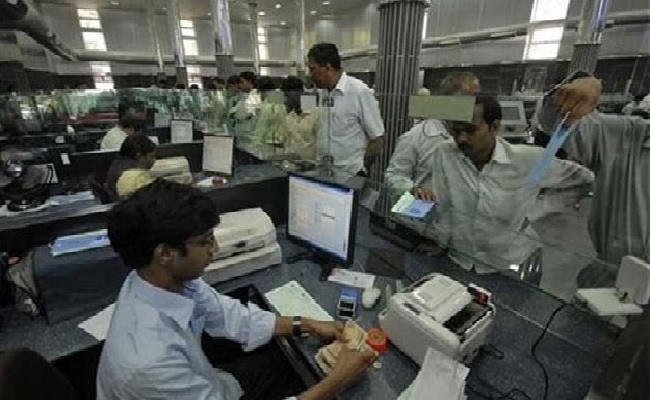
The NDA government's Income Declaration Scheme (IDS), which opened a window for balck money hoarders to declare their ill-gotten wealth and come clean, is closing today.
The government, in order to further facilitate the filing of declarations, has extended the working hours of the Central Board of Direct Taxes (CBDT) until 8 pm on Thursday and Wednesday. The Income Tax Department offices will remain open all over the country until the midnight today.
What is the scheme all about?
The scheme, which came into effect for a period of four months starting from June 1 this year, was announced by the government with an aim of bringing out black money from the domestic economy. Those who declare their un-taxed wealth under the scheme can make their payments as follows:
i) a minimum amount of 25% of the tax, surcharge and penalty to be paid by 30 November 2016;
ii) a further amount of 25% of the tax, surcharge and penalty to be paid by 31 March 2017;
iii) the balance amount to be paid on or before 30 September 2017.
The time for making payments was extended considering the practical difficulties of the stakeholders, who feared they may have to resort to distress sale of assets.
Penalty against the tax evaders or those people do not declare their deposits and assets under the IDS would be 100 percent to 300 percent, besides jail terms ranging from three months to seven years, depending upon the severity of the fault and laxity.
The government hopes to collect taxes worth Rs 50,000 crore and declaration worth Rs 1 lakh crore.
How is the government facilitating income declaration?
The CBDT is leaving no stone unturned to ensure maximum declarations under the window.
The government has assured people that the information declared under the scheme would be kept confidential and not shared with any authority.
Further, the payments made under the scheme shall neither be reflected in the annual statement, which is the consolidated tax statement, nor can it be viewed by the assessing officer in the Online Tax Accounting System (OLTAS) of the department in the interest of confidentiality.
The I-T department has been directed to accept declarations without PAN under the black money compliance window, but ensure that the unique number is later obtained by the entity concerned.
The Central Board of Direct Taxes (CBDT) has asked tax sleuths to ask such declarants to attach a separate application in the IDS form for allotment of a fresh PAN to them quickly.
The decision was notified by CBDT as some field offices brought to its notice that they were encountering "few cases" where an entity wanted to make a declaration of black money under IDS, but had no PAN.
The extension of date to make payments was also part of this effort.
Separately, the Reserve Bank of India has instructed banks to accept cash deposits at the counter from people declaring unaccounted wealth under the scheme.
What are the criticisms against the scheme?
As the IDS deadline drew nearer, the I-T department started conducting raids across the country. Even the small businesses were not spared.
The opposition has accused the government of harassment.
Congress spokesperson Manish Tewari alleged that under the scheme, the total declaration made till 30 August was Rs 4,164 crore only and the total tax collected was only Rs 2,428 crore.
As against this, in 1997, the then United Front government's voluntary disclosure of income scheme (VDIS), the total declaration made was Rs 33,000 crore and total tax collected Rs 10,000 crore. The scheme was devised by then finance minister P Chidambaram.
"if today we go to any trading hub in the country there are these horror stories of how the small trader, the honest businessman, the honest taxpayer is being literally coerced in order to make declaration to fulfil the target under this income declaration scheme," Tewari said.
Will the scheme be a success?
The jury is still out. Media reports say the government hopes raise anywhere between Rs 35,000-50,000 crore from the scheme.
According to this Business Standard report, the declarations have picked up towards the close of the scheme, which the government has refused to extend.
The tax officials cited by the newspaper say that the scheme will be a success if the income declarations goes beyond Rs 50,000 crore. Even declarations worth Rs 40,000 crore is not bad, they say.
However, if, as the Congress alleged, the officials have been harassing the tax payers to meet targets, it may end up as a failure and is likely to backfire.
MCX Soars Over 12% As SEBI Allows Options Trading In Commodities
New Delhi:MMNN:29 Sept. 2016
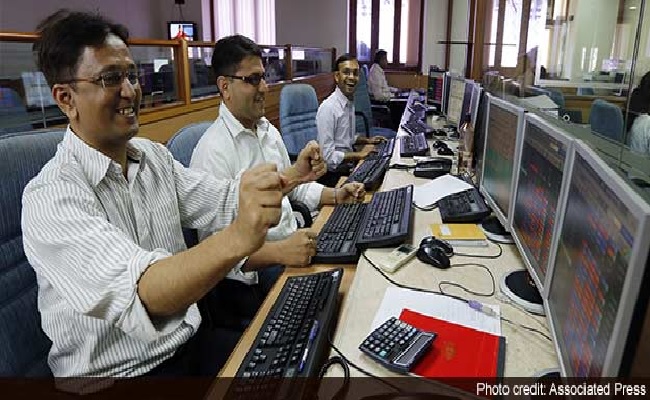
Shares of Multi Commodity Exchange of India soared over 12 per cent to hit its one-year high level after regulator Sebi allowed options trading on the exchanges.
The stock surged 12.3 per cent to touch its one-year high mark of Rs. 1,400 on BSE. On NSE, it jumped 11.87 per cent to Rs. 1,399 - its 52-week high.
In a major push to deepen the commodity derivatives market, regulator Sebi yesterday allowed options trading on exchanges while six new products, including diamond, have been added to the list of commodities on which derivative contracts can be launched and traded.
The new items -- diamond, tea, eggs, cocoa, pig iron and brass -- have taken the total number of permitted commodities on the notified list to 91.
Exchanges, investors and other market participants have been demanding options trading as also new products for a long time.
They have welcomed the move taken by the government and Sebi, which now regulates the commodities market as well.
So far, only futures contracts are permitted in the commodity derivatives trading space.
"Introduction of options would deepen and transform the Indian commodity derivatives markets both in terms of products and participants. It will also complement the existing futures contracts and make Indian commodity derivatives more vibrant and efficient," MCX MD and CEO Mrugank Paranjape said.
India Jumps 16 Spots In Global Competitiveness For Second Year In A Row
New Delhi:MMNN:28 Sept. 2016
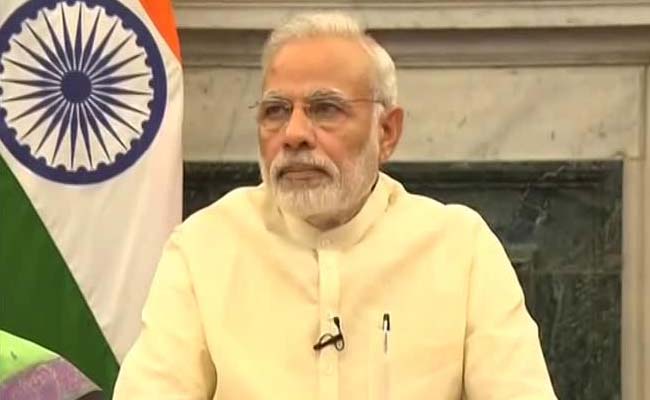
India has climbed 16 places to the 39th rank on the global competitiveness index prepared by the World Economic Forum, in a big boost to Prime Minister Narendra Modi government's reform initiatives.
The World Economic Forum's global competitiveness index assesses the competitiveness landscape of 138 economies, providing insight into the drivers of their productivity and prosperity.
The jump of 16 places for India from last year's 55th place is the highest for any economy this year. India is also the second-most competitive among BRICS nations behind neighbouring China, which is ranked at the 28th position.
This is the second year in a row India's ranking has jumped 16 spots in the index.
For the eighth straight time, the list is topped by Switzerland as the most competitive economy. Singapore and the US are at the second and third positions, respectively.
On the index, India has a score of 4.52 while that of Switzerland is 5.81.
At the fourth spot is Netherlands, followed by Germany (5), Sweden (6) and the UK (7), Japan (8), Hong Kong (9) and Finland (10).
India's "competitiveness has improved across the board, in particular in goods market efficiency, business sophistication, and innovation".
"Thanks to improved monetary and fiscal policies as well as lower oil prices, the Indian economy has stabilised and now boasts of the highest growth among G20 countries," according to WEF's Global Competitiveness Report 2016-17.
While recent reforms efforts have concentrated on improving public institutions, opening the economy to foreign investors and international trade and increasing transparency in the financial system, WEF said, adding "still, a lot needs to be done".
Further, the report noted that India is "still long way" from having in place all the competitiveness elements to realise its potential as a major global economy. The labour market is still bound by rigid regulations and centralised wage determination while infrastructure also remains a bottleneck, it added.
The rankings are based on the Global Competitiveness Index (GCI), which is based on country-level data covering 12 categories. These include institutions, infrastructure, macroeconomic environment, health and primary education, financial market development, technological readiness, market size, business sophistication and innovation.
This year, 138 economies have been assessed for their competitiveness while there were 140 economies in the 2015-16 rankings.
Globally, WEF said the degree to which economies are open to international trade in goods and service has been declining for 10 years and this could hurt prosperity in future.
"Declining openness in the global economy is harming competitiveness and making it harder for leaders to drive sustainable, inclusive growth," WEF founder and Executive Chairman Klaus Schwab said.
Reliance Jio helps Ambani brothers find a common connection
New Delhi:MMNN:27 Sept. 2016
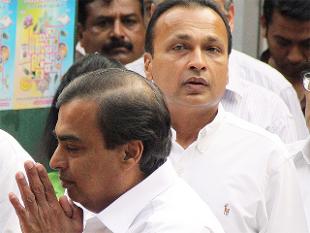
Reliance Jio may have helped Ambani brothers find a connect. At a Reliance CommunicationsBSE 1.16 % shareholder meet on Tuesday, chairman Anil Ambani had good words for his brother Mukesh, hinting at thawing of relations between the two.
Anil was commenting on RCom's association with Jio. He said both brothers were working together to realise the dream of their late father Dhirubhai Ambani, and this association has accomplished a virtual merger between RCom and Rel Jio.
"There are two committed brothers — Mukesh Ambani and Anil Ambani — both working relentlessly to fulfill the dream of Dhirubhai."
Dhirubhai's death had sparked the feud for control which lead to the split of the Reliance Group. The two bought peace in 2005, which gave Mukesh control of oil and gas, petrochemicals, refining and manufacturing while Anil took reign over electricity, telecoms and financial services.
He also said the company already has all the spectrum they need for 2G 3G and 4G, plus spectrum trading and sharing with Reliance Jio. This will be beefed up further once the merger is complete.
"Spectrum sharing with Rel Jio has resulted in RCom's expenditure on this coming down (substantially) while the competition will have to spend heavily on spectrum to survive," he said.
Grappling with mountain of debt, RCom said it is planning to pare the Rs 42,650-crore burden by up to 75 per cent over the next one year.
Anil said, "The target is to reduce debt by 75 per cent within a year (from Rs 42,651 crore) and once the ongoing merger processes of MTS and Aircel with RCom are complete, it will help reduce debt by Rs 20,000 crore."
Describing the three-way merger as the largest ever consolidation in the domestic telecom industry, he said this will create a formidable operator with the second largest holder of spectrum aggregating 448 MHz across the 850, 900, 1,800 and 2,100 MHz bands.
It will also make RCom one of the largest and valuable corporates with an asset base of over Rs 65,000 crore and networth of Rs 35,000 crore, he said.
The merger, once completed, will make RCom the fourth largest telecom player with around 180 million subscribers.
Earlier this month, RCom had signed a definitive agreement with Aircel for the merger of wireless businesses with itself. RCom and Aircel will each hold have equal stake in the merged entity.
The merger will lead to a reduction in RCom's overall debt by Rs 20,000 crore from its total debt of Rs 42,651 crore, and Aircel's debt will come down by Rs 4,000 crore from Rs 23,436 crore.
The company had however told investors and analysts that even after the merger, the new entity will have debt of Rs 35,000 crore, including Rs 7,000 crore in the form of deferred spectrum payment liabilities. This is higher than its previous statement that new entity's debt will be restricted to Rs 28,000 crore.
Ambani also said the company will shortly announce monetisation of its tower business, which has been in the making for many years now.
Indiabulls Housing Finance To Raise Up To Rs. 7,000 Crore Via NCDs
New Delhi:MMNN:26 Sept. 2016
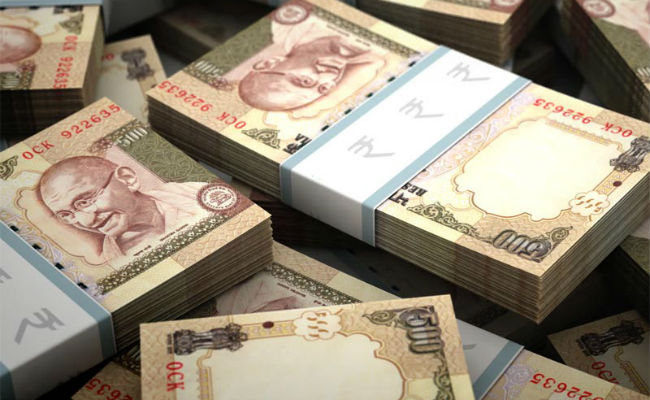
Indiabulls Housing Finance on Monday said it will raise up to Rs. 7,000 crore from non-convertible debentures (NCDs) to fund its business expansion.
"The Bond Issue Committee of the company... approved the issue and allotment of secured redeemable non-convertible debentures and unsecured redeemable non-convertible debentures of face value of Rs. 1,000 each,
to base issue of Rs. 3,500 crore with an over-subscription up to Rs. 3,500 crore for issuance of additional NCDs aggregating up to Rs. 7,000 crore," Indiabulls Housing Finance said in a regulatory filing.
The debentures are expected to carry a coupon rate in the range of 8.55-9.15 per cent.
Shares of Indiabulls Housing Finance were trading 0.48 per cent down at Rs. 810.55 apiece on BSE.
No Extension In Deadline For Black Money Disclosure Scheme
New Delhi:MMNN:24 Sept. 2016

Government on Friday ruled out any extension to the September 30 deadline for filing income disclosure under the black money compliance window.
In a series of tweets, Revenue Secretary Hasmukh Adhia said that expectations are raised that looking to the enthusiasm of people for making IDS declaration, the date for income disclosure scheme (IDS) would be extended.
"We want to make it very clear that the last date for Income Declaration Scheme (IDS) will not be extended," Adhia tweeted.
Under the IDS, people can disclose their undeclared income and escape prosecution. The scheme, which was launched on June 1 to uncover black money, closes on September 30.
"We, therefore, appeal to people to file their declarations in time before 30th September," Adhia said.
Those disclosing assets under the IDS will have to pay 45 per cent tax plus penalty. Also the payments can be made in three instalments till September rpt September 2017.
5 Indian cities named in Mastercard's top 100 global destinations' list
New Delhi:MMNN:23 Sept. 2016

Five Indian cities have made it to the Mastercard Global Destinations Cities Index of 'Top 100 destination cities for 2016', with Mumbai ranking at number 27, Chennai at the 30th rank, New Delhi at number 48, Kolkata at 62nd rank, and Pune at the 91st, MasterCard said in a press release.
In the Fastest Growing Destination Cities category, Mumbai and Chennai ranked 14 and 19, respectively, with at least one million overnight visitors in 2016.
Furthermore, Mumbai was the only Indian city to secure a spot in Asia Pacific's 'Top 10 Destination Cities', in terms of International Overnight Visitors in 2016. With 4.86 million visitors along with a visitor spend of $3.6 billion (nearly Rs 23,949.9 crore) in 2016, Mumbai ranked 10th, with Shanghai preceding it.
MasterCard's Vice President, Marketing, South Asia, Parag Bhatnagar, said, "With an evolving business landscape and thriving tourist destinations, India has been witnessing a high influx of overseas travellers for both business and other purposes."
He further added, "It is interesting to see five Indian cities making it to the Top 100 destination cities globally for 2016. This trend also projects a huge potential for Indian cities to develop as global hubs for investment in terms of business and tourism alike.”
The Mastercard Global Destinations Cities Index ranks 132 most visited cities around the world, and focuses on visitor volume and spending estimates to understand how people travel and spend around the world. It also looks at the total number of international overnight visitor arrivals and cross border spending by these visitors, to give visitor and passenger growth forecast.
With an estimated 21.47 million international overnight visitors in 2016, Bangkok topped as the 'leading destination city by international overnight visitor arrivals'. It was followed by London (19.88 million visitors), Paris (18.03 million visitors) and Dubai (15.27 million visitors).
Asian cities have a strong hold in this index with cities like Bangkok, Singapore, Kuala Lumpur, Tokyo, and Seoul making up half of the global top 10 cities, while Osaka, Chengdu, Colombo, Tokyo, Taipei, Xi'an and Xiamen were seven of the 'top 10 fastest growing destination circles'.
Elsewhere in the world, London was named as Europe's top feeder city in terms of visitor and spending volume, while Lima was named Latin America's fastest growing city and top visit destination with 4.03 million visitors.
With a fourth global rank, Dubai was the Middle East and Africa's top ranked destination city whereas Abu Dhabi topped as the region's fastest growing city since 2009, making United Arab Emirates (UAE) the region's fastest growing country for the second time.
New York ranked fifth globally, and was North America's top destination city with its overnight visitor spending summing up to $18.50 billion (nearly Rs 1.23 lakh crore) in 2016.
20,000 crore for marketing in the festival season
MMNN:22 Sept. 2016
India Inc. may spend close to Rs 20,000 crore on advertising, marketing and promotion in the four-month festive season that's under way, a 12% increase from levels last year, according to four top media planners in the country.
Consumer durable companies are expected to be among the largest spenders during the festive season, increasing their marketing expenditure by as much as 10%.
Consumer sentiment is expected to be buoyant due to a good monsoon and higher salaries and pensions with the implementation of the Seventh Central Pay Commission recommendations. "We expect a good festive season this year with a growth of 12% over the last year," said Ashish Bhasin, CEO South Asia, Dentsu Aegis Network.
"The sectors which advertise for tier-II, tier-III cities such as two-wheelers, consumer durables and others are expected to spend. The estimate spend during the four months from September to December is Rs 20,000 crore."
The festive season starts with Ganesh Chaturthi and Onam in September, peaks during Diwali and continues on to Christmas. With the season contributing 40 per cent of annual sales, companies spend heavily on advertising to make the best use of the biggest shopping opportunity of the year. The surge in consumer spending drives sales for several categories of products, ranging from phones and clothes to vehicles and jewellery.
Spending by ecommerce companies, which were among the big advertisers during the previous two festive seasons, dropped to Rs. 394 crore in the first half of 2016 from Rs. 629 crore in the first half of 2015, according to the Pitch Madison Mid-Year Advertising Report 2016.
Advertisers in India will increase spending by about 13% to Rs 49,812 crore in 2016, said Pitch Madison in the report. Although ecommerce spends are suppressed, handset makers, automobiles and FMCG companies will more than make up for them this festive season, as will Reliance Jio Infocomm, the new mobile phone operator, according to Sam Balsara, chairman of Madison World, the company that buys media for Snapdeal and ITC, among others.
"The worry is not how much the big three ecommerce companies will spend as much as the 50 others who have packed up. Jio is the new kid on the block and will also spend heavily," Balsara said. The big online retail platforms — Amazon, Flipkart and Snapdeal — are expected to run aggressive campaigns. Snapdeal recently announced a budget of Rs 200 crore for advertising during the festive season.
"The larger players are expected to spend heavily during the festive season. But there will be fewer advertisers in the ecommerce category as compared to the last festive season," Bhasin of Dentsu said. Funding for ecommerce companies has reduced and several smaller platforms do not have enough money to spend on advertising. "While television and print both see an uptake in demand during the festive months, it is skewed slightly towards the print media.
Sectors such as ecommerce, handset makers and automobiles bank heavily on print, increasing the demand by up to 25-30% as against the regular months," said Mallikarjun Das, Group CEO of Starcom India. However, some media planners said that while there is an upsurge in sentiment, there is hardly any uptake in terms of spending.
"The quarter with festive season will definitely be better than other quarters, but whether it will cover the deficit of the rest of the year is a question," said Anita Nayyar, CEO India & South Asia at Havas Media.
HDFC Bank Raises Rs. 6,700 Crore Via Bonds
New Delhi:MMNN:22 Sept. 2016
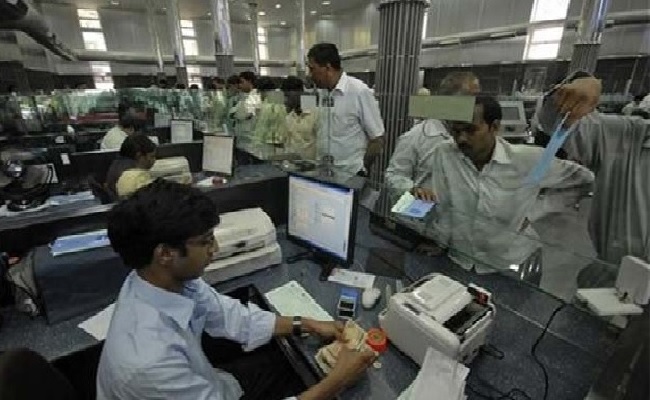
HDFC Bank on Thursday said it has raised Rs. 6,700 crore by issuing bonds via private placement.
"The bank has issued and allotted on September 21, 2016 on a private placement basis, senior, unsecured, redeemable, long term, non-convertible bonds in the nature of debentures amounting to Rs. 6,700 crore," HDFC Bank said in a regulatory filing.
It said that a total of 67,000 bonds were issued with face value of Rs. 10 lakh each.
Earlier in April this year, the private sector bank had said that it will raise Rs. 50,000 crore through bonds over a period of one year to fund business growth.
Shares of HDFC Bank traded 0.91 per cent up at Rs. 1,304.50 on BSE.
Railway budget scrapped, merged with general budget
New Delhi:MMNN:21 Sept. 2016

There will be no separate railway budget+ from the next financial year.
The Union Cabinet on Wednesday gave its nod to merge the railway budget with the general budget from next year, putting an end to a practice that started in 1924.
"Rail budget and general budget will be amalgamated from now, there will only be one budget," finance minister Arun Jaitley said after the Cabinet meeting.
"However, the functional autonomy of railways will be maintained," Jaitley said.
The decision to merge the railway budget with the general budget is significant as in recent years, particularly since coalition governments post-1996, political heavyweights have used the railway budget to hand out goodies and for their own image building. With the railway portfolio often held by regional biggies, the budget reflected political priorities of the incumbent. The railway bureaucracy has also dug in its heels in the past.
Railway minister Suresh Prabhu's readiness to give up the limelight is a break from the past as BJP seems in a position to dump the railway budget as its solid majority in Lok Sabha enabled it to retain the portfolio rather than handing it to an ally.
The move to discard the British-era practice of a separate rail budget by the Modi government comes after a two-member committee comprising Niti Aayog member Bibek Debroy and Kishore Desai recommended the exercise be scrapped.
Budget session advanced
With a view to get all the legislative approvals for the annual spending and tax proposals before the beginning of the new financial year on April 1, the Cabinet headed by Prime Minister Narendra Modi approved advancing date for presentation of the general budget by a month instead of present practice of unveiling it at the end of February.
To facilitate this, the budget session of Parliament will be called sometime before January 25, a month ahead of the current practice.
Accordingly, the beginning of budget preparation will be advanced to early October and GDP estimates made available on January 7 instead of February 7 now.
Till now budget was presented on the last day of February and it is not until mid-May that the Parliament approves it in two parts. And with the monsoon arriving in June, most of the schemes and spendings by states do not take off until October, leaving just half a year for their implementation.
Early presentation of budget would mean that the entire exercise is over by March 31, and expenditure as well as tax proposals come into effect right from the beginning of new fiscal, thereby ensuring better implementation.
Dant Kanti, Patanjali Juices, Paytm, Amul ads found to mislead consumers: ASCI report
New Delhi:MMNN:20 Sept. 2016

Advertising industry watchdog Advertising Standards Council of India (ASCI)’s Consumer Complaint Council (CCC) has upheld complaints against 98 out of 159 advertisements in June this year.
The report mentions defaulting ads from some of the big firms across sectors.
Out of 98 ads against which complaints were upheld, 39 belonged to the education category, 25 in the healthcare and personal care products category, followed by 11 in the food and beverage, six in e-commerce and 17 in other categories.
Patanjali Ayurveda Ltd has been rapped for three misleading advertisements in health and personal care as well as food and beverage categories.
The first one for its toothpaste brand Dant Kanti, which takes a dig at multinational fast moving consumer goods companies that now talk about natural tooth cleaning sources taking cue from Patanjali.
The second ad for Patanjali Juices claims that they provide more fruit pulp than the existing brands in the market, which is unsubstantiated.
The third ad for the energy bar claims that eating chocolate is bad for health which, according to the regulator, is not substantiated and unfairly denigrates the chocolate category.
Responding to the ASCI report, S.K. Tijarawala, spokesperson for Patanjali Ayurved, said, “ASCI is an unconstitutional body. It has no authority to question us. The Bombay high court, in an order last year, flayed ASCI for its high handedness despite not being a regulator. ASCI’s actions are nothing but a collective conspiracy by some multi-national companies. We have already filed a case against ASCI in Bombay high court. The hearing is on 21 September.”
Meanwhile, Gujarat Co-operative Milk Marketing Federation Limited was also hauled up for Amul Epic Choco Almond campaign owing to the misleading visual on its packaging. The visual shows the product core to be dark brown implying that the product contains more of chocolate whereas the core of the product is not as dark as depicted on the pack.
Organic India Pvt. Ltd. which manufactures Tulsi Green Tea brand claims to have antioxidants which help to prevent ageing. This claim was inadequately substantiated with the absence of clinical data.
The industry watchdog also cracked a whip on six e-commerce companies for misleading ads. One97 Communications Limited which runs online payments firm Paytm was hauled up for a television commercial that shows a motorcyclist using Paytm at a petrol pump while another scene in the ad shows distance between the person using the mobile device and petrol pump is visibly closer than three meters, which violates Clause C (3) of 4th Schedule of the Petroleum Rules, 2002.
Cab-hailing service Uber India Systems Private Ltd ad promoted its bike-sharing product called Uber Moto by offering a flat Rs10 rate.
However, the ad omitted the mention of the validity period leading to ambiguity.
The other defaulters in this category included Naaptol Online Shopping Pvt. Ltd, Policy bazaar Insurance Web Aggregator Private Limited, PrintVenue.com, and ibibo Group Private Limited.
In the others category, Arvind Lifestyle Brands Limited’s outdoor ads for its apparel brand Flying Machine used headlines such as ‘What an Ass!’ and ‘Kiss My Ass’ along with visuals of a woman presented in a specific posture which objectifies them.
ASCI found the ad indecent and vulgar.
“Most companies (both multinationals and home-grown) mentioned in the June report have, by and large, complied with our regulations. Either they have withdrawn the ad or modified it and in case of technical claims the company has sought CCC review. Meanwhile we have seen a gradual rise in the complaints from the e-commerce sector in the last three years. Although, most of these companies are not ASCI members they comply with the regulations,” said Shweta Purandare, secretary general, ASCI.
ICICI Prudential Life's Rs 6,057 cr IPO: Key facts you need to know
Mumbai:MMNN:19 Sept. 2016

ICICI Prudential Life Insurance's Rs 6,057 crore IPO, the first public offering by an Indian insurer, has hit the primary market starting today in a price band of Rs 300-334 per share.
This will be the country's second biggest IPO in terms of size after the Coal India public issue, which raised Rs 15,000 crore via the capital market route in 2010.
The private life insurer, majority owned by ICICI Bank, has already raised Rs 1,635.33 crore from the 40-odd anchor investors on Friday, with some of the marquee names such as Morgan Stanley, Goldman Sachs, Nomura, Government of Singapore, UTI MF and HDFC Standard Life, among others.
While the IPO closes on 21 September (Wednesday), below are some of the interesting facts about the insurer that investors can go through before putting in their bids.
1) The public offer comprises of up to 18,13,41,058 equity shares of ICICI Prudential Life Insurance Company, including a reservation of up to 1,81,34,105 equity shares (10 percent of the offer) for the shareholders of ICICI Bank. The offer would constitute 12.63 percent of the company's post-offer paid-up equity share capital. The parent ICICI Bank holds 67.52 percent while Prudential Corporation Holdings owns 25.83 percent stake in the company. The company offers range of life insurance, health insurance and pension products & services.
2) In November 2015, ICICI Prudential sold 6 percent stake to Azim Premji and Temasek Holdings for Rs 1,950 crore, which then valued the company at Rs 32,500 crore. Currently, at the upper end of the price band of Rs 334 a share, the insurance company is now valued at Rs 47,857 crore, which is 3.4 times its embedded value as of March 2016.
3) Of the country's 23 private sector life insurance entities, ICICI Prudential Life's market share stood at 21.9 percent in FY16 as against 16.1 percent in FY12. During the quarter ended June 30, 2016, market share among all insurance companies in India and among private sector life insurance companies in India was 11.2 percent and 23.3 percent, respectively, a Moneycontrol report said.
4) The private life insurer's gross premium income in the last fiscal (2015-16) jumped by 25.2 percent to Rs 19,164.4 crore on year and 23.16 percent in FY15 to Rs 15,306.6 crore, respectively. In the first quarter of the current fiscal year (2016-17), the company's gross premium income stood at Rs 3,560 crore, up 14.4 percent over Q1FY16. Last financial year, the company's profit rose by just 0.75 percent on year at Rs 1,652.7 crore as against 5 percent to Rs 1,640.35 crore in FY15. In the quarter ending 30 June 2016, profit was up 2 percent at Rs 405 crore over the first quarter of FY16.
5) The company's claims settlement ratio for individual death claims improved to 96.2 percent in FY16, which is the highest compared with nearest private sector competitor. The insurer has been paying annual dividends since fiscal 2012, while it has declared an interim dividend of 1.10 per share and a special dividend 1 per share for the quarter ended June 2016.
6) For ICICI Pru Life, unit linked insurance products accounted for 82.6 percent of retail annualised premium equivalent in FY16 and 75.2 percent in Q1FY17. Its annualised premium equivalent from unit linked insurance products increased from Rs 2,210 crore in FY14 to Rs 4,179 crore in FY16, the Moneycontrol report said. As of June 2016, it had Rs 1.09 trillion of assets under management.
7) As of June 2016, ICICI Pru Life had 1,24,155 individual agents and as of 12 July, bank partners had 4,606 branches, with Maharashtra, Gujarat, Karnataka, Tamil Nadu and Delhi accounting for over 55 percent and 56.1 percent of total received premium from new business retail policies in FY16 and the three months ended June 2016, respectively.
8) However, select brokerages feel ICICI Life's valuations appear stretched and the share sale may not offer much of a listing gains.
Kotak Institutional Equities, an arm of Kotak Securities Ltd, values ICICI Pru at Rs 41,000 crore or Rs 285 a share, which is 5-16 percent lower to the IPO price band, a Mint report said.
Angel Broking with a neutral rating on the IPO believes all the positives are priced in. “While the firm has enough scope for business growth in future, we believe the issue is fully priced in and, hence, we have a neutral rating on the issue,” Mint report quoted Angel Broking's analyst Siddharth Purohit as saying.
ICICI Prudential Life Insurance IPO raises Rs.1635 crore from anchor investors
Mumbai:MMNN:17 Sept. 2016

ICICI Prudential Life Insurance Company Limited has finalized the allocation of 48,962,085 equity shares at a Price of Rs.334 (upper end of the Price Band) aggregating to Rs.1,635.33 crore to anchor investors.
The company proposes to open on Monday, September 19, 2016, an initial public offer of up to 181,341,058 equity shares of face value of Rs.10 each (“Equity Shares”) for cash at a price band from Rs.300 to Rs.334 per Equity Share through an offer for sale (the “Offer”) by ICICI Bank Limited, one of the promoters and the selling shareholder (“Promoter Selling Shareholder”) including a reservation of up to 18,134,105 Equity Shares for purchase by ICICI Bank Shareholders (“ ICICI Bank Shareholders Reservation Portion”).
The Offer would constitute 12.63% of the post-offer paid-up Equity Share capital of the Company and the Net Offer shall constitute 11.37% of the post-offer paid-up equity share capital of the Company. The Offer will close on Wednesday, September 21, 2016. Bids can be made for a minimum of 44 Equity Shares and in multiples of 44 Equity Shares thereafter.
The GCBRLMs to the Offer are DSP Merrill Lynch Limited and ICICI Securities Limited. The BRLMs to the Offer are CLSA India Private Limited, Deutsche Equities India Private Limited, Edelweiss Financial Services Limited, HSBC Securities and Capital Markets (India) Private Limited, IIFL Holdings Limited, JM Financial Institutional Securities Limited, SBI Capital Markets Limited and UBS Securities India Private Limited.
The Equity Shares offered through the Offer are proposed to be listed on the National Stock Exchange of India Limited (“NSE”) and BSE Limited (“BSE”), NSE being the Designated Stock Exchange.
This Offer is being made through the Book Building Process, in terms of Rule 19(2)(b) of the Securities Contracts (Regulation) Rules, 1957, as amended (“SCRR”). The Offer is being made in accordance with Regulation 26(1) of the SEBI Regulations, wherein not more than 50% of the Net Offer shall be allocated on a proportionate basis to Qualified Institutional Buyers (“QIBs”), provided that the Company and the Promoter Selling Shareholder may, in consultation with the GCBRLMs and the BRLMs, allocate up to 60% of the QIB Portion to Anchor Investors on a discretionary basis, out of which one-third shall be reserved for domestic Mutual Funds only, subject to valid Bids being received from domestic Mutual Funds at or above the Anchor Investor Allocation Price, in accordance with the SEBI Regulations. 5% of the QIB Portion (excluding the Anchor Investor Portion) shall be available for allocation on a proportionate basis to Mutual Funds only, and the remainder of the QIB Portion shall be available for allocation on a proportionate basis to all QIB Bidders (other than Anchor Investors), including Mutual Funds, subject to valid Bids being received at or above the Offer Price. Further, not less than 15% of the Net Offer shall be available for allocation on a proportionate basis to Non-Institutional Investors and not less than 35% of the Net Offer shall be available for allocation to Retail Individual Bidders in accordance with the SEBI Regulations, subject to valid Bids being received at or above the Offer Price. All potential investors, other than Anchor Investors, are required to mandatorily utilise the Application Supported by Blocked Amount process providing details of their respective bank account which will be blocked by the SCSBs, to participate in this Offer.
Sebi To Auction Tower Infotech's Properties Next Month
New Delhi:MMNN:16 Sept. 2016

To collect funds for repayment to investors, markets regulator Sebi will next month conduct an auction of three properties of West Bengal-based Tower Infotech Ltd, which had garnered money through illegal pooling schemes.
The Securities and Exchange Board of India (Sebi) has initiated the process for sale of assets of Tower Infotech Ltd, as per an order from Calcutta High Court, under which the auction would be conducted for sale of the company's assets.
In a notice, the capital markets watchdog said that the sale of Tower Infotech's three properties will be conducted on October 4, before the High Court.
The sale would be conducted through physical auction and the properties would not be sold below the reserve price fixed.
The properties listed for sale includes storied buildings and a land parcel in Calcutta with a reserve price of totalling Rs. 5.2 crore.
Prospective buyers have been asked to send applications along with a payment for an amount equivalent to 10 per cent of the reserve price as earnest money by October 3. These properties can be inspected during September 26-27.
Last year, Sebi had conducted an auction for a land parcel of Tower Infotech. In 2014, the regulator had auctioned the company's four properties.
Information Under Domestic Black Money Scheme Confidential: Government
New Delhi:MMNN:15 Sept. 2016

Government on Thursday said information about those who declare their black money under the compliance window, ending September 30, will be kept confidential.
As regards concerns regarding confidentiality of the information filed under the scheme, it is reiterated that information contained in a valid declaration is confidential and shall not be shared, an official statement said.
"In respect of declarations filed with the Commissioner of Income-tax, Centralised Processing Centre, Bengaluru [CIT (CPC)], the declaration shall not be shared even with the jurisdictional Principal Commissioner/Commissioner and payments made under the Scheme shall not be visible to the jurisdictional officers," it said.
Form-2 and Form-4 required to be issued in such cases shall be system generated by the CPC, it said.
Similarly, it said, the declaration filed with jurisdictional Principal Commissioner or Commissioner shall not be shared with any authority within or outside the department including the jurisdictional Assessing Officer.
"Further, the payments under the Scheme shall neither be reflected in 26AS statement nor can be viewed by the Assessing Officer in the Online Tax Accounting System (OLTAS) of the Department in the interest of confidentiality," it said.
IDS scheme, launched by the government on June 1 to uncover black money, closes on September 30.
As per the IDS facility, one can pay tax under the scheme by cash in a bank and no enquiry will be made by any bank official.
Under IDS one can come clean by paying tax, penalty and cess totalling 45 per cent of the undisclosed income.
News in numbers | Reliance Jio’s total assets at Rs1,35,726 crore
New Delhi:MMNN:14 Sept. 2016

In other news, the government is developing 35,000km of roads billed as the most ambitious roads project that could boost the economy, bring down costs and create jobs.
Rs 1,35,726 crore
What is it? The total assets of Reliance Jio Infocomm, the telecom subsidiary of Reliance Industries, as of 31 March 2016.
Why is it important? It shows the massive scale of the Reliance Jio telecom launch. And this figure is likely to increase further, with the company announcing that it would raise another Rs.15,000 crore through an optionally convertible debt instrument.
Tell me more: This fund-raising announcement comes in the wake of Jio’s commercial launch of 4G services on 5 September and as a prelude to the spectrum auctions in October.
40
What is it? The number of economic corridors that India is planning to develop.
Why is it important? It will involve developing 35,000km of roads (21,000km of economic corridor and 14,000km of feeder routes). It could cost Rs.6 trillion in investments. It’s billed as the most ambitious roads project since the golden quadrilateral project under the National Democratic Alliance led by Atal Bihari Vajpayee, and can boost the economy, bring down costs and create jobs.
Tell me more: Consulting firm A.T. Kearney is expected to submit its final report on the project in a month
4,000
What is it? The number of additional Army personnel deployed in Kashmir to restore normalcy.
Why is it important? They have been told to use minimum force. The Army recently came under heavy criticism for using pellet guns. By using more people and minimum force, the government hopes to “calm down” the valley with broader public support.
Tell me more: The troops are spread out mostly in four districts of Pulwama, Shopian, Anantnag and Kulgam which were at the centre of violent protests following the killing of militant Burhan Wani.
£85,000
What is it? The cost of resettling a Syrian refugee in the United Kingdom, as compared to £17,000 in the US and £21,000 in Germany.
Why is it important? Four western countries—UK, US, Germany and Canada—are planning to resettle more than 900,000 Syrian refugees. The wide range in costs show the different ways in which countries are dealing with the influx. In the UK, the government takes care of the entire cost, including housing. But in the US, the government involves churches and charities, who adopt families and take care of accommodation.
Tell me more: India has more than 201,000 refugees, with more than 100,000 from Tibet. But India hasn’t signed the 1951 United Nations Refugee Convention.
323
What is it? The combined difference in world ranking between the singles tennis players of Spain and India who play in the Davis Cup world group play-off tie in New Delhi later this week.
Why is it important? Despite consistently not having high-ranking singles players, India has punched above its weight in this team tennis competition. Its current ranking is 20, out of 155 nations.
Tell me more: In the upcoming tie, India will be represented in singles by Saketh Myneni (world ranking of 137) and Ramkumar Ramanathan (203), and Spain by Rafael Nadal (4) and David Ferrer (13).
Income Declaration Scheme: Pay tax on time to get relief, CBDT says
New Delhi:MMNN:13 Sept. 2016

The Central Board of Direct Taxes (CBDT) said assessees taking advantage of the Direct Tax Dispute Resolution Scheme, 2016, will be required to pay the taxes within the stipulated period to avail the relief under the scheme.
"The tax payable under the scheme should be paid to the credit of the government on or before the due date as specified in the scheme. The assessees are advised to pay the tax well on time so as to avail the relief under the scheme," Central Board of Direct Taxes (CBDT) said in an FAQ.
The scheme, announced by Finance Minister Arun Jaitley in his Budget, provides an opportunity to taxpayers who are under litigation to come forward and settle the dispute.
The CBDT clarified that declaration cannot be filed under the scheme, in case where the appeal was pending before CIT (Appeals) as on February 29, 2016 and the CIT (Appeals) has already disposed of the same before making the declaration, the declaration under the Scheme cannot be filed.
It further said "in a case where the declaration has been made under the scheme or an intention to avail the scheme has been made by the appellant, the CIT (Appeals) shall not dispose the pending appeal."
As per the scheme, in a case where disputed tax in quantum appeal is more than Rs 10 lakh, the declarant has to pay the disputed tax, interest and 25 % of minimum penalty leviable.
Further, in a case where the disputed tax in quantum appeal does not exceed Rs 10 lakh, the declarant is required to pay only the disputed tax and interest and there is no requirement for payment of any amount in respect of penalty leviable.
According to FAQ, a case where notice of enhancement has been received by the declarant before the date of commencement of the scheme June 1, 2016 shall not be eligible for the scheme.
It further said the assessees are advised to make declarations in cases or for assessment years where the additions are made on substantive basis.
"The protective demand is not subjected to recovery unless it is finally upheld. Once the declaration in a substantive case or year is accepted, the tax arrear in protective case/year would no longer be valid and will be rectified by suitable orders in the normal course," the CBDT said.
Clarifying a query, whether by filing declaration under the scheme for one assessment year, does the taxpayer forgo his right of appeal on the same issue in another assessment year, the CBDT replied in negative.
"The order under the scheme does not decide any judicial issue. It only determines the sum payable under the scheme with reference to tax arrear or specified tax, as the case may be. It only provides for a dispute resolution mechanism in respect of cases for which declaration has been made," CBDT said.
The Direct Tax Dispute Resolution Scheme, introduced on June 1, seeks to address the issue of pending litigation before Commissioner of I-T (Appeal). The scheme is open till December 31.
As per I-T department data, there were 73,402 appeals with tax effect above Rs 10 lakh and 1,85,858 appeals with tax effect below Rs 10 lakh which are pending before CIT (Appeal) as on February 29. Thus, 2,59,260 appellants are eligible for the benefit of this scheme.
Cabinet Approves Creation Of GST Council
New Delhi:MMNN:12 Sept. 2016

The Cabinet on Monday approved setting up of the GST Council, which will decide on the rate of tax under the new Goods and Services Tax (GST) regime, likely to kick in from April 1, 2017.
The GST Council will consist of Union Finance Minister, Minister of State in charge of Revenue Department and state finance ministers, government's official spokesperson tweeted after the Cabinet meeting headed by Prime Minister Narendra Modi.
The Cabinet "approved setting up of GST Council and setting up its Secretariat," an official statement said here.
The Council will hold its first meeting on September 22 and 23, it added.
It will make recommendations on important issues related to GST, including items and rates. Its secretariat costs will be borne by the central government.
GST implementation steps are ahead of schedule so far, the government said. "The steps required in the direction of implementation of GST are being taken ahead of the schedule so far."
"The Cabinet also decided to provide for adequate funds for meeting the recurring and non-recurring expenses of the GST Council Secretariat, the entire cost for which shall be borne by the Central Government. The GST Council Secretariat shall be manned by officers taken on deputation from both the Central and State Governments," the statement said.
While the GST Council will be created as per Article 279A of the amended Constitution, GST Council Secretariat will have its office at New Delhi.
Revenue Secretary will be the ex-officio Secretary to the GST Council, which will have Chairperson, Central Board of Excise and Customs (CBEC) as a permanent invitee (non-voting).
Also, a post of Additional Secretary to the GST Council in the GST Council Secretariat and four posts of Commissioner in the GST Council Secretariat (at the level of Joint Secretary to the Government of India) will be created.
As per Article 279A of the amended Constitution, the GST Council, which will be a joint forum of the Centre and the States, shall be headed by Union Finance Minister.
While, Union Minister of State in-charge of Revenue will be its member and so will be minister in-charge of finance or taxation or any other minister nominated by each State Government.
The Council will make recommendations to the Union and the States on important issues related to GST, like the goods and services that may be subjected or exempted from GST, model GST Laws, principles that govern Place of Supply, threshold limits, GST rates including the floor rates with bands, special rates for raising additional resources during natural calamities/disasters and special provisions for certain States.
While the Centre will have one-third vote in the GST Council, states together will have a two-third say. To adopt a resolution, three-fourth majority would be required.
The Constitution (122nd Amendment) Bill, 2016, for introduction of Goods and Services tax in the country was accorded assent by the President on September 8, 2016, and the same has been notified as the Constitution (One Hundred and First Amendment) Act, 2016.
As per Article 279A (1) of the amended Constitution, the GST Council has to be constituted by the President within 60 days of the commencement of Article 279A. The notification for bringing into force Article 279A with effect from September 12, 2016 was issued on September 10, 2016.
Parliament on August 8 had passed the bill, which then went to the states for ratification. A Constitution Amendment Bill needs to be ratified by the legislative Assemblies of at least 50 per cent of the 29 states and 2 union territories.
The bill was sent to the President's secretariat after as many as 19 states -- BJP-ruled Assam being the first -- ratified the bill.
The other states, which passed the legislation include Bihar, Jharkhand, Chhattisgarh, Himachal Pradesh, Gujarat, Madhya Pradesh, Delhi, Nagaland, Maharashtra, Haryana, Sikkim, Mizoram, Telangana, Goa, Odisha and Rajasthan.
The states and the Centre are working overtime and talking to stakeholders to draft the Central GST, State GST and Integrated GST laws, which are to be passed in Winter Session of Parliament.
The CGST and IGST will be drafted on the basis of the model GST law. The states will draft their respective State GST (SGST) laws with minor variation incorporating state-based exemptions. The IGST law would deal with inter-state movement of goods and services.
Ten things to know about BSE's Rs 1,300-crore IPO
Mumbai:MMNN:10 Sept. 2016

The BSE has filed the Draft Red Herring Prospectus (DRHP) with the markets regulator on Friday, bringing it a step closer to listing its shares.
The BSE IPO has been long time coming it was held up because of a lack of clarity on the rules of listing a stock exchange. The BSE is the oldest stock exchange in Asia and the largest in terms of the number of companies listed on it.
Here are ten things you need to know about the IPO
-- BSE will be listing its shares on the National Stock Exchange (NSE). This is because Securities and Exchange Board of India (Sebi) doesn't allow self-listing of shares.
-- BSE hopes to raise about Rs 1,200 to Rs 1,300 crore from the IPO. However, none of the proceeds from the IPO will benefit any BSE directors, key management personnel or Group companies, Zee Business said.
-- The Singapore Exchange which is one of the stake holders in the exchange, it likely to sell off its entire 4.7% holding.
-- Out of the nearly 9,300 stakeholders, only 262 of them are likely to sell their shares in the proposed IPO. The shareholders are expected to sell nearly 3 crore shares of the exchange and cash out.
-- The shares will be put on sale via Offer For Sale, which lets existing promoters dilute or divest their entire stake.
-- Deutsche Boerse, Life Insurance Corporation (LIC), and State Bank of India, who are all own stake in the BSE, are not likely to sell their stake in the IPO.
-- BSE will become the first Indian stock exchange to go public. The Multi Commodities Exchange became the first Indian bourse to go public, in 2012.
-- BSE will be selling 29.96 million shares or nearly 28% of its stake in the IPO. The shares would be in the price band of Rs 400 to Rs 500 crore, valuing the BSE at Rs 5,000 crore.
-- BSE has picked Axis Bank, Edelweiss, Jefferies and Nomura as the joint coordinators.
-- SBI Capital Markets, SMC Capitals, Motilal Oswal, Spark Capital, are the other bookrunners.
According to a Reuters report, BSE was long-planning to launch its IPO but had put it off because of a lack of clarity on the rules for stock exchanges to list.
Pradhan meets potential oil investors in Singapore
Singapore:MMNN:9 Sept. 2016

Indian Petroleum Minister Dharmendra Pradhan arrived here on Friday on the first leg of his six-day, two-nation visit to lead the country's road shows to attract foreign investors in exploiting its discovered small oil and gas fields.
"Addressed road show on small discovered blocks in Singapore. About 200 delegates and potential investors participated in it," Pradhan tweeted, on what was his first engagement in the two-country visit, which will next take him to the UK.
"Singaporeis a global hub for trading of petroleum, petrochemical products and oil service equipments. There can be good synergy between the two countries. It is also a major financial centre in Asia from where FDI and foreign equity investors can invest in Indian oil and gas sector."
The bidding for discovered small fields had been announced by India in July 2016 in Houston. Following that, 67 such fields are on the block, an official statement said. The process is open till end-October.
"These fields are spread over nine sedimentary basins and will be offered in 46 contract areas. These fields are projected to yield 625 million barrels of oil and oil equivalent gas and spread over 1,500 sq km on land, shallow water and deep water areas."
The auction is also being held under new norms, which replaces the controversial production-sharing contracts -- by which oil and gas blocks are awarded to firms which show they will do maximum work on a block -- that has governed the bidding under the earlier nine rounds.
Eventual operators will be issued a single licence for exploration of conventional and non-conventional hydrocarbons and will have the freedom to sell oil and gas at "arms length" market prices. There would be no cess on crude oil.
|